In this post, I am going to be sharing how I came into awareness of what is called the Sulphur Springs Water Tower, and what I found when I recently visited it and what is in its vicinity in Tampa, Florida.
Four years ago, in June of 2016, was the last time I had been in Florida – to take my mom to a family reunion – prior to my latest trip there in July of 2020 to place my mom in an assisted living facility in her hometown in Central Florida.
Tampa International Airport is the closest airport to her hometown in Pasco County, Florida, the neighboring county to Tampa’s Hillsborough County.
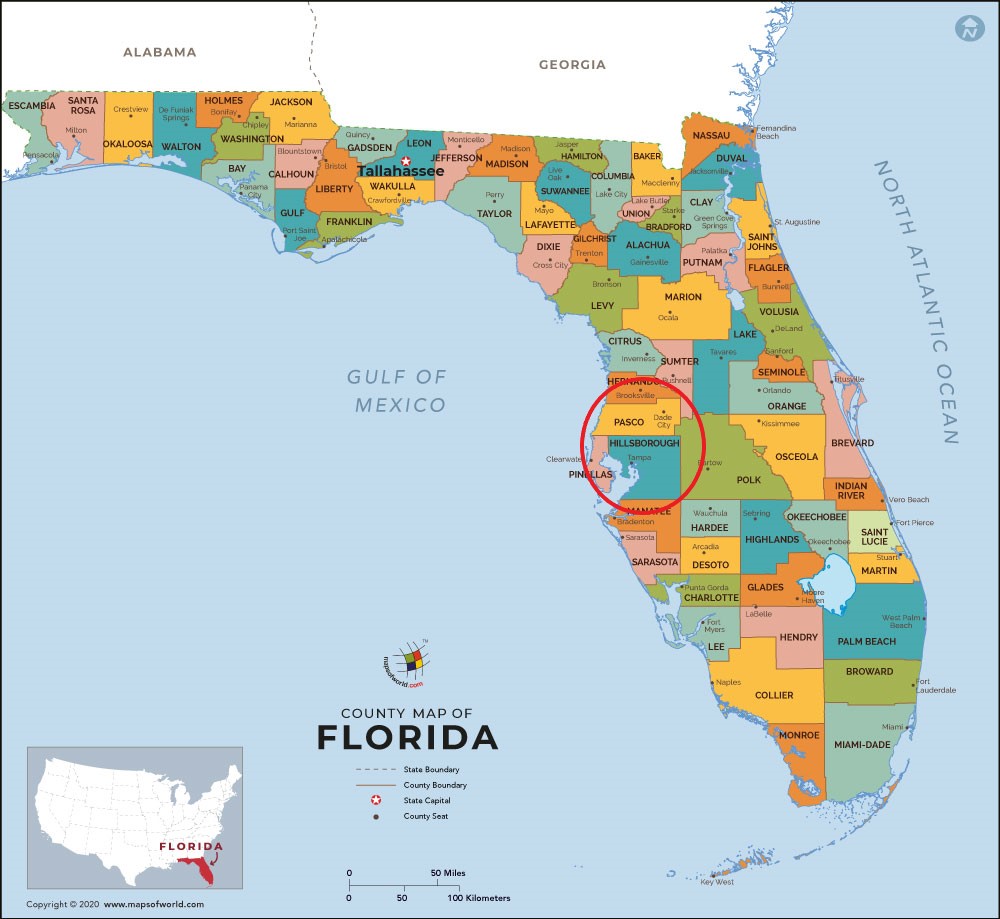
I had just started to really wake up to the ancient advanced civilization hidden in the landscape all around us in 2016.
So in 2016, when I spotted this landmark heading north on I-275, right next to the highway, shortly after leaving the Tampa International Airport, it really stuck in my memory as something noteworthy.
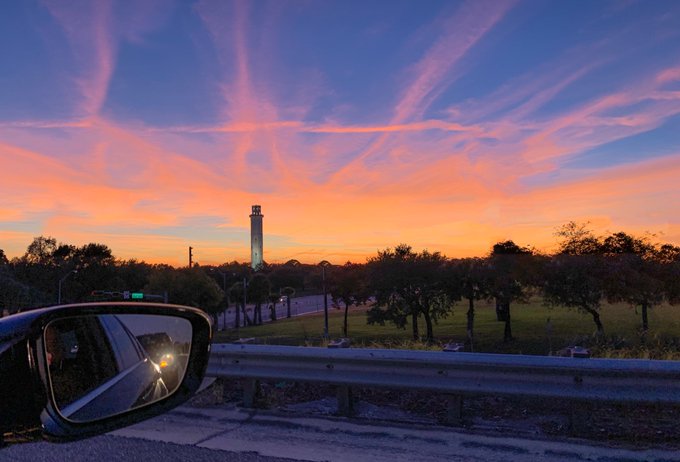
I didn’t know the name of it until an acquaintance urged me to check out places to explore on my trip to Florida, from which I just returned.
At that time, I looked up “Tampa Lighthouse” because that is what it looked like to me, and I found out that the towering landmark I remembered was called the “Sulphur Springs Water Tower.”
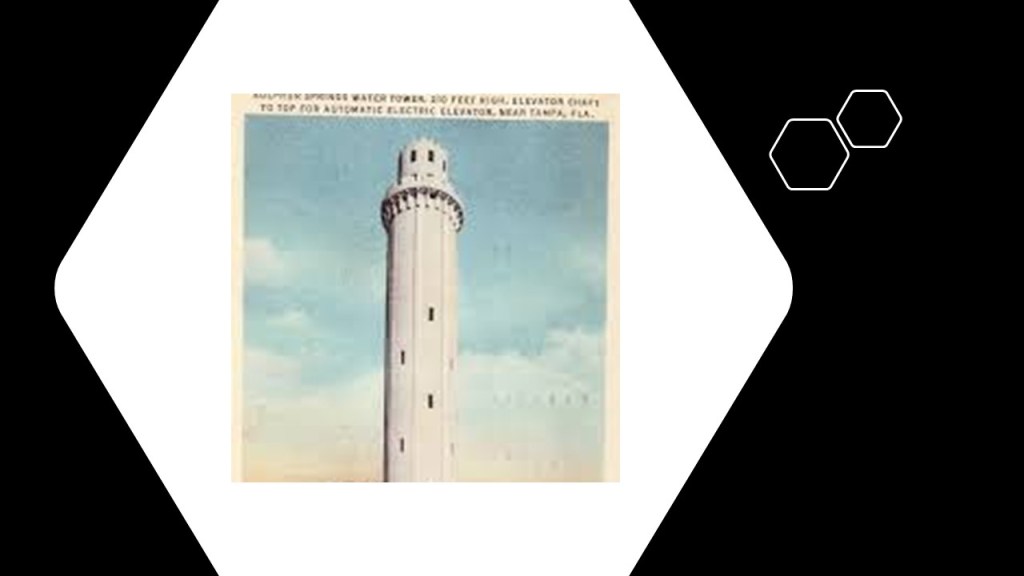
I also saw historic pictures like this one, describing Sulphur Springs as “Florida’s Coney Island.”

At this point, my curiosity was further piqued because now there was a tie-in into my research on the relationships between early amusement parks and trolleys, most of which are long-gone, either destroyed by things like fire…or demolished for so-called modern urban development.
I made sure that I left time at the end of my trip to spend time spend looking around there, which I was able to do on the day before I left Florida, which was on Wednesday, July 29th.
I had already looked at the area on Google Earth in order to get an idea about where to look and what to look into because I am not familiar with the area.
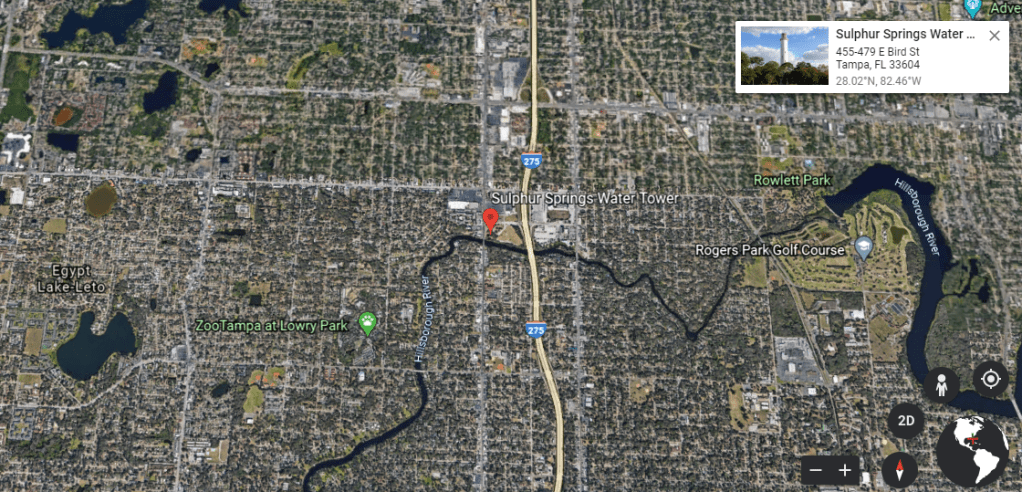
I reserved a room on Busch Boulevard near Busch Gardens for the last night of my trip, in the middle of the part of Tampa I wanted to explore.
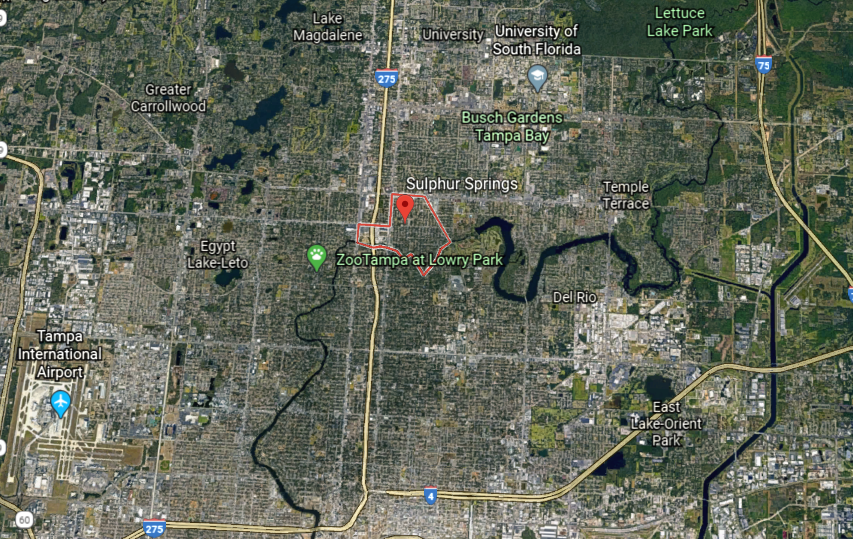
My starting point for this exploration is the Sulphur Springs Water Tower, which is located at the corner of East Bird Street and North Florida Avenue, also known as Business Highway 41.
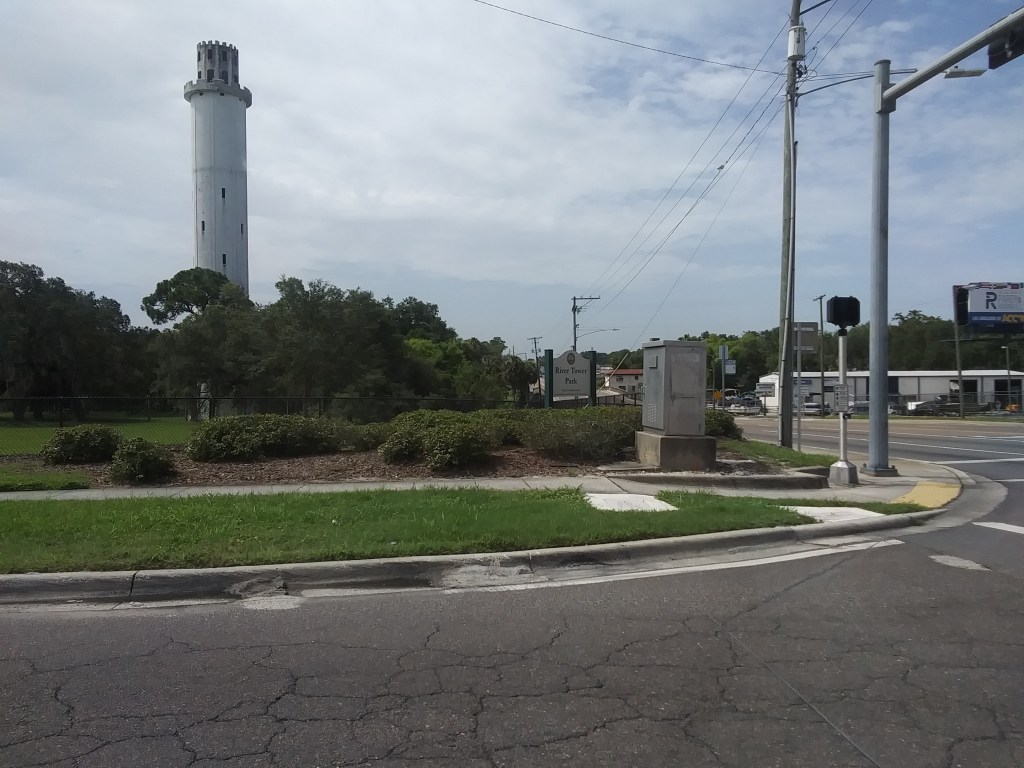
It is 214-feet, or 65-meters, tall, and its foundation is said to be 45-feet, or 14-meters, deep.
It is located in what is called “River Tower Park,” adjacent to the Hillsborough River in the Sulphur Springs District.
Here is a historic depiction of the Water Tower and its grounds…

…and this is what the grounds look like today.
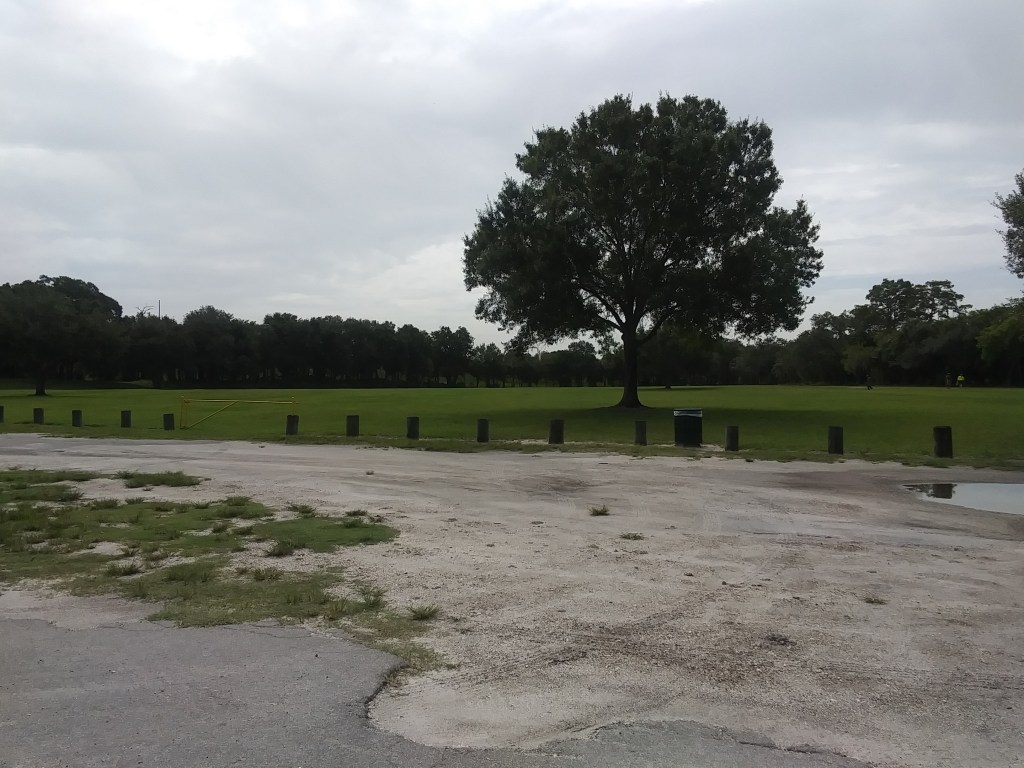

With the exception of some stately old oaks…
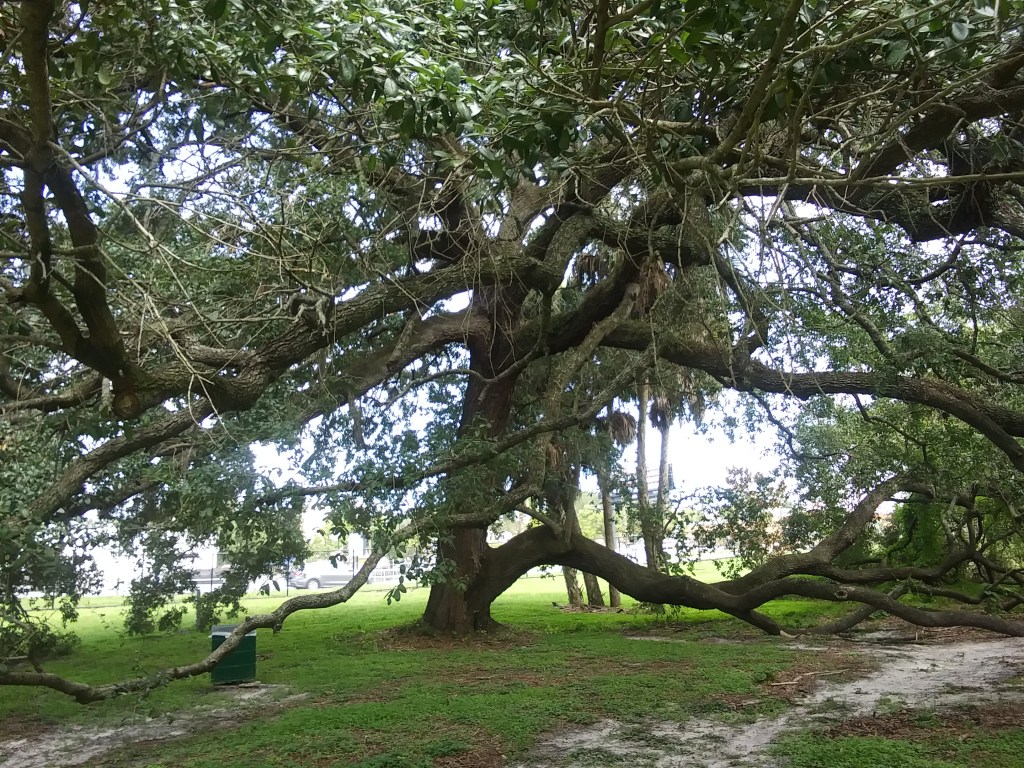
…the location felt neglected, and while I was there, I had the “River Tower Park” all to myself.
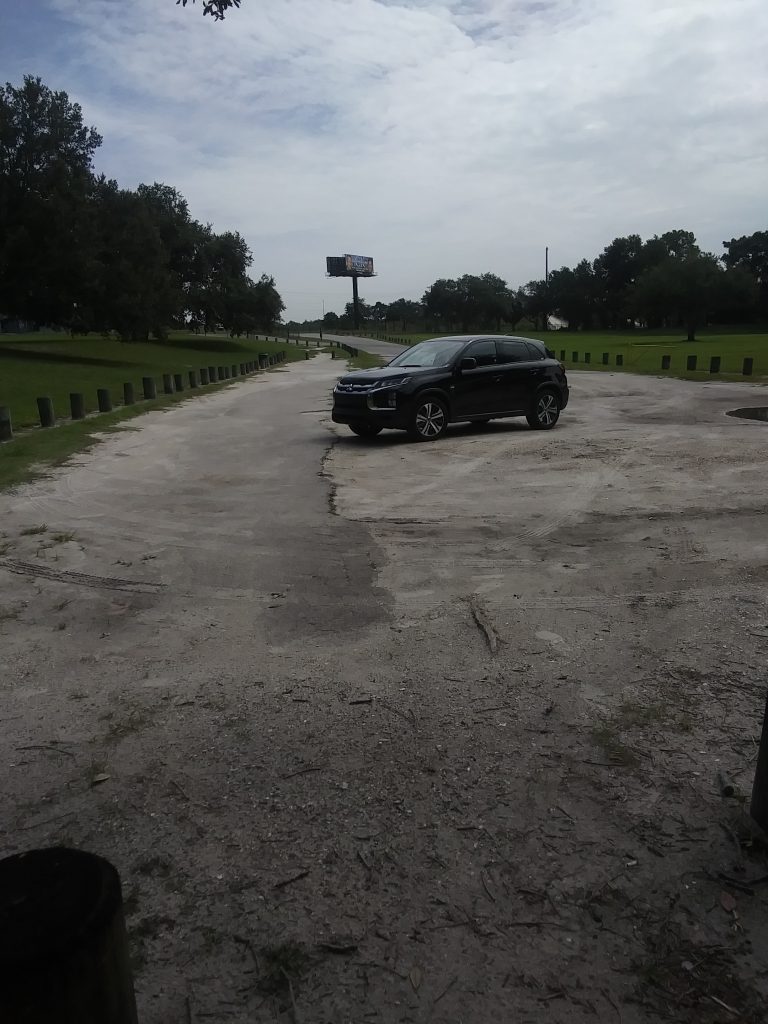
An architect by the name of Bob Lafferty was said to have designed the water tower…
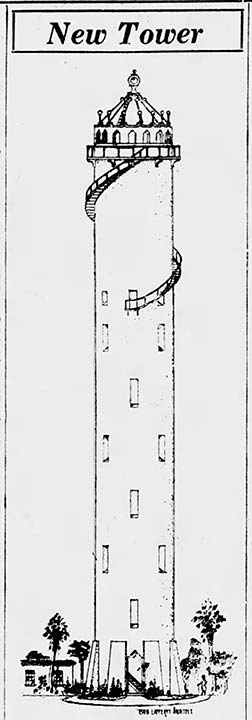
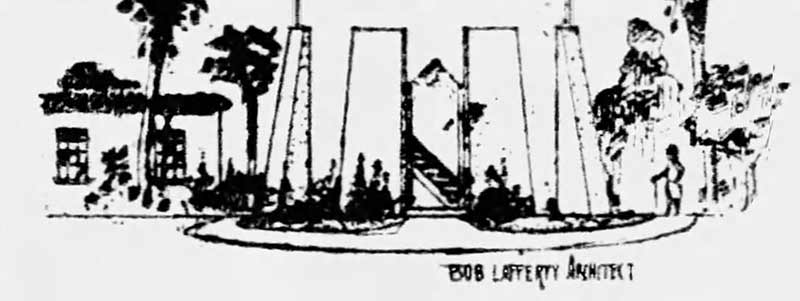
…and a cement contractor named Grover Poole was said to have built the water tower in 1927 for developer and realtor Josiah Richardson.
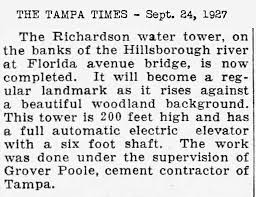
It was said to have been built to ensure an adequate water pressure to supply the building which housed the Sulphur Springs Hotel and Apartments on the second floor, and Mave’s Arcade on the first-floor…
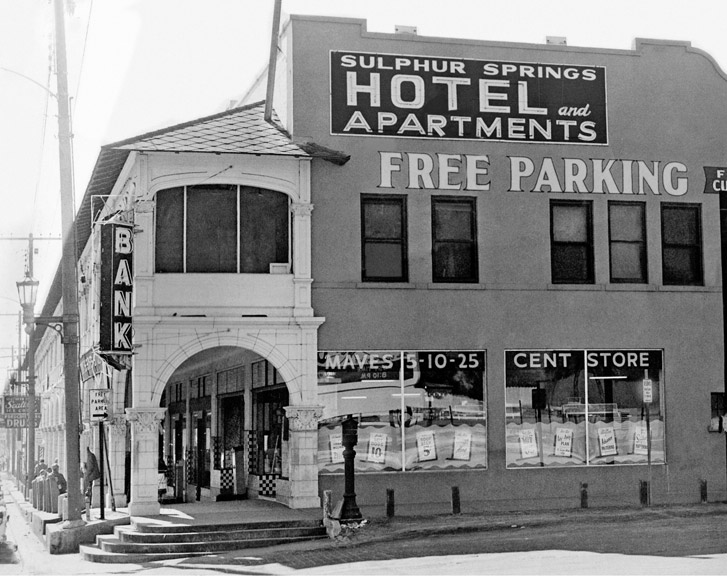
…called the first shopping mall in Florida.

We are told Josiah Richardson mortgaged all of his assets in Sulphur Springs to finance the Water Tower, which was said to have cost him $180,000 to guarantee the water supply to his properties.
When it was operational, it was said to have stored 136,000 gallons of water pumped from an artesian well, with the water tank occupying the upper quarter of the tower, while 7-floors occupy its lower three-quarters, and somewhere in there was said to have an electric elevator as well going up to the top.
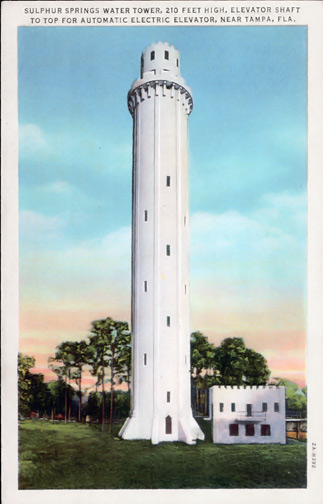
Alas, Josiah Richardson lost his Sulphur Springs properties in 1933, when the Tampa Electric Company dam collapsed, and flooding ripped through downtown Tampa.

From its construction in 1927 until 1971, the Water Tower provided artesian well-water to both businesses and residences in the immediate vicinity, at which time the City of Tampa was said to have forced the end of its water-piping operations.
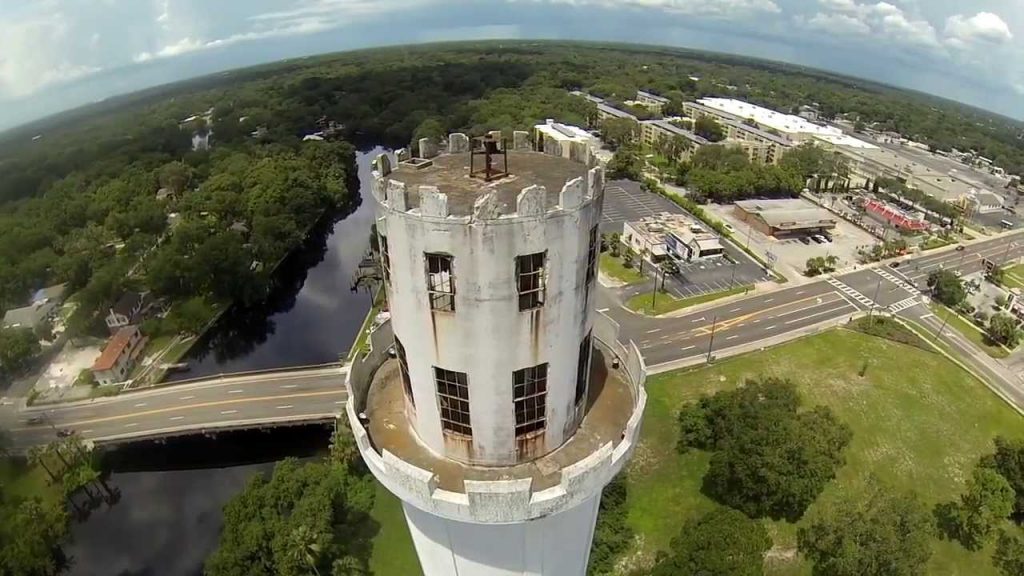
Water flows from an artesian well under natural pressure without pumping, providing an endless water supply.

City water utilities charge for water use.

It is interesting to note that the Tower Drive-in Theater opened on property next to the Water Tower in 1951.

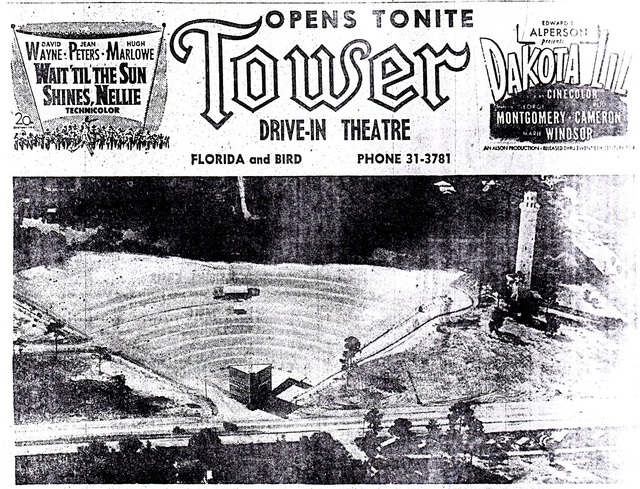
The drive-in theater was levelled in 1985 in order to make-way for an apartment complex that was never built.
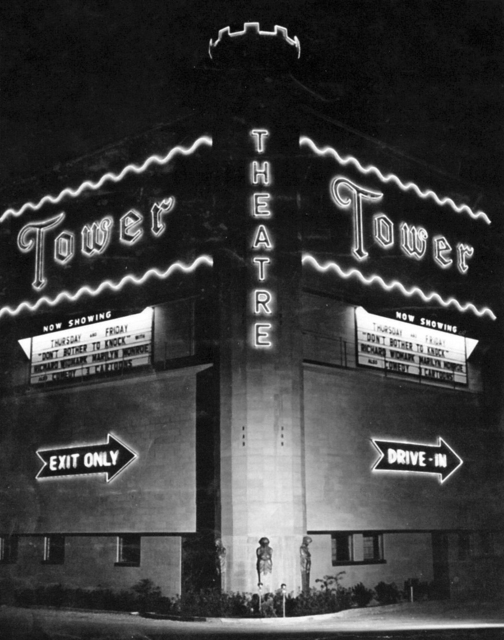
The grounds of River Tower Park has survived interest in developing it into high-end apartments in the 1980s, as well a large-chain drugstore that wanted to develop it in 2002.
In 2005, the City of Tampa installed lights for night-time illumination of the water tower.
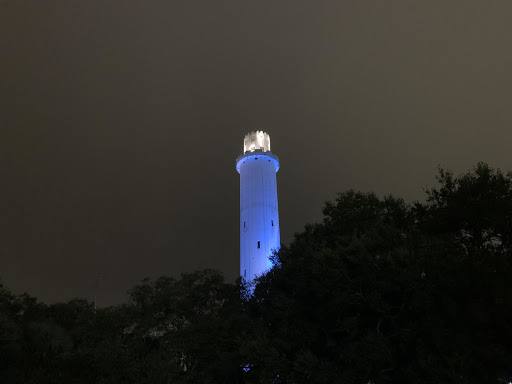
I have received comments from viewers mentioning other similar towers.
One is the Alhambra Tower in Coral Gables, Florida, near Miami.
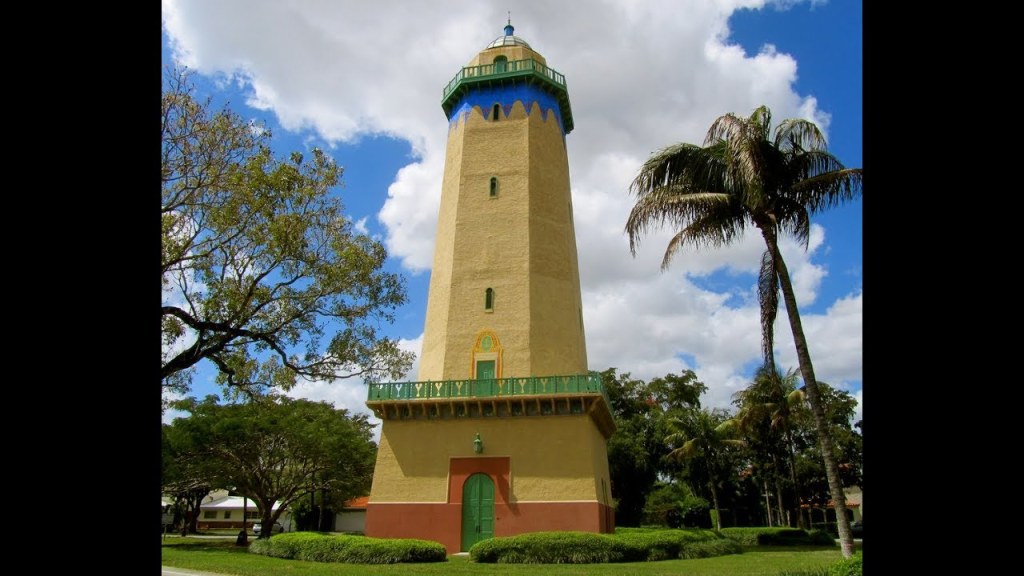
It was said to have been built in 1924, and was part of the city of Coral Gables domestic water supply system until 1931 when it was disconnected from the system and abandoned after the water company started buying water from the City of Miami.
It was saved from demolition and purchased by the city of Coral Gables for what was described as a token sum in 1958, and said to have been restored in 1993 from old photographs.

Firstly, does it make any sense to built something massive and solid like this, and use it for only 7 years?
Was the Alhambra Water Tower also built over an artesian well, like the Sulphur Springs Water Tower in Tampa?
Were endless natural sources of water being shut-down in favor of metered water and control of this essential for life resource?
There were other artesian wells in Coral Gables, as evidenced by the Venetian Pool, said to have been completed in Coral Gables in 1924
It is in a shallow quarry which brings in fresh water from artesian wells.

Secondly, I wonder how these water towers and lighthouses are connected, since that’s what they look like.

Lighthouses figure prominently on the Earth’s alignments I have been tracking, along with star forts and rail transportation infrastructure.
The Alhambra Water Tower is not far from the Miami Biltmore Hotel…
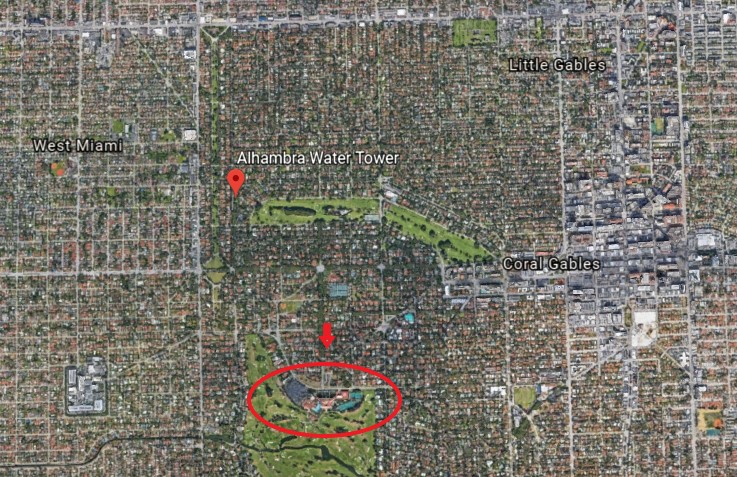
…said to have been built in 1926 through land developer George Merrick, who is given the historical credit for developing Coral Gables during the Florida Land Boom of the 1920s, and Biltmore Hotel magnate John McEntee Bowman…
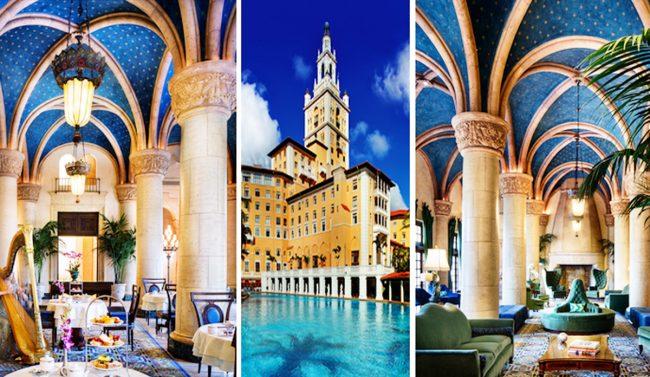
…and said to have been inspired by the Giralda, the bell-tower of the cathedral of Seville which has an acknowledged Moorish history.

The Bok Tower in the gardens at Lake Wales came up in comments from several people.
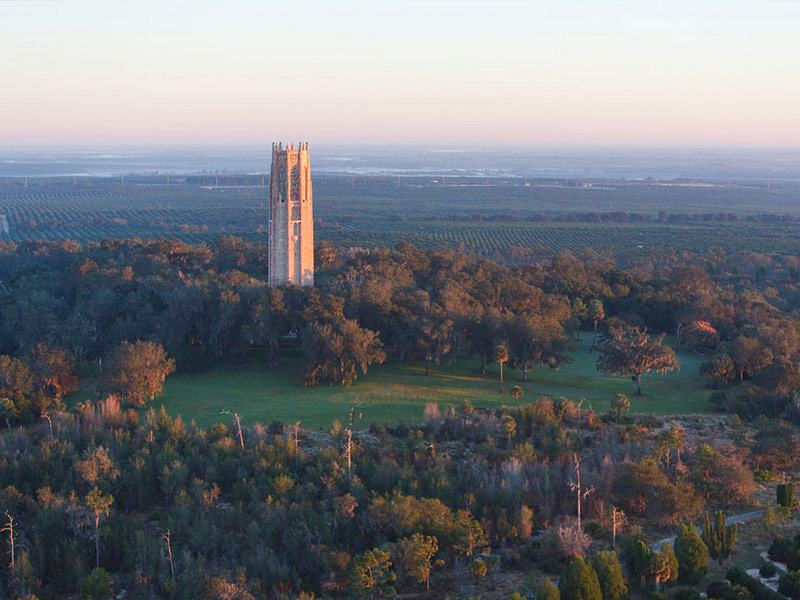
It is located on what is called Iron Mountain, called one of the highest points on the Florida Peninsula.

The Bok Tower is also a bell-tower like the Giralda Tower in Spain, and is also known as the “Singing” Tower.
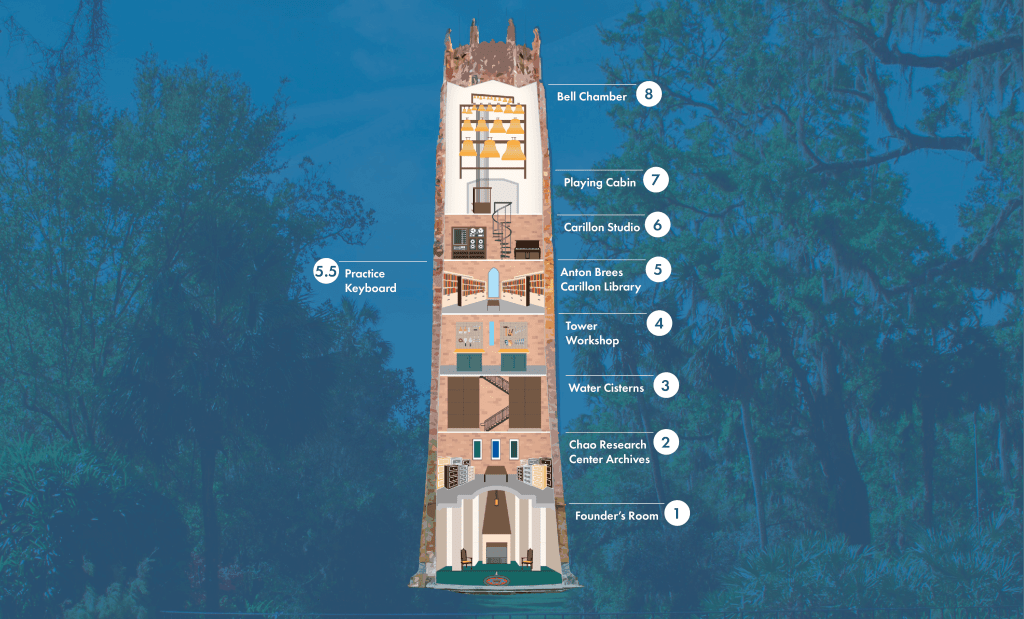
It was said to have been commissioned by Dutch immigrant and “Ladies Home Journal” magazine editor at one time, Edward Bok, and said to have been built between 1927 and 1929, when it was dedicated by President Calvin Coolidge.
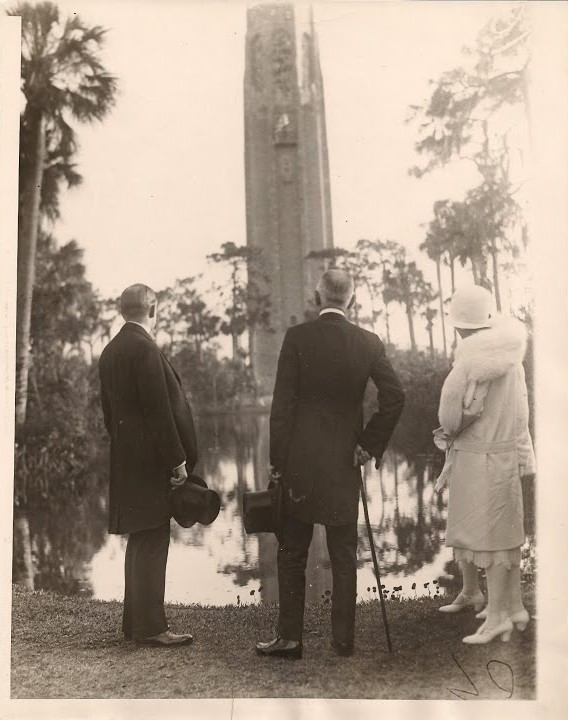
Edward Bok died in 1930, the year after the completion of his bell-tower.
The Citrus Tower in Clermont, Florida, near Orlando, was said to have opened in 1956, and was a big, pre-Disney World, tourist attraction in its hey-day.
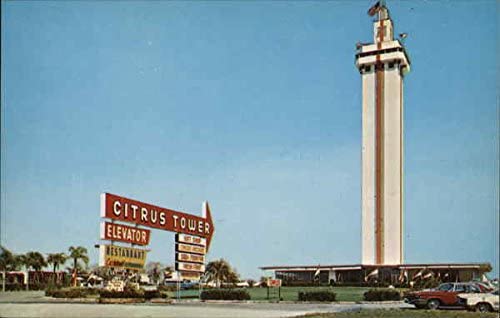
It is another massive Florida tower with an electric elevator, like the Sulphur Springs Water Tower…
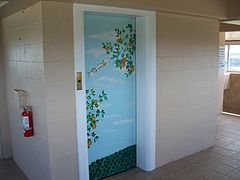
…and is also a bell-tower like the Bok Tower.
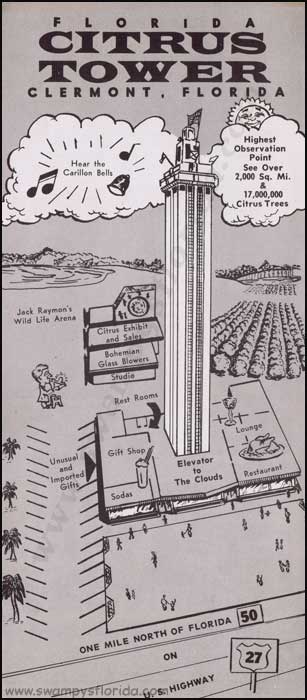
What was the purpose of these massive bell-towers reaching up to the clouds for the original civilization?
Were they musical generators of healing and harmonious frequencies for the benefit and balance of all of Creation?
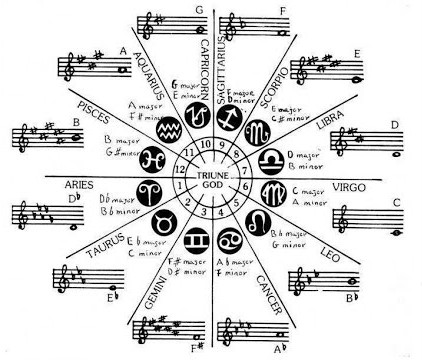
Just a few more examples of water towers mentioned in viewers’ comments before I move on to looking at the Tampa neighborhood of Sulphur Springs itself.
The Grand Avenue Water Tower is said to be the oldest of the three water towers in St. Louis that are still standing today.
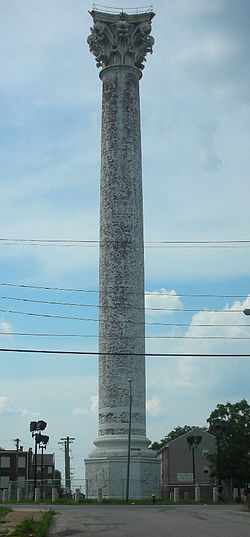
Said to have been built by architect George Barnett in 1871, it is the tallest, free-standing, Corinthian column in the world.
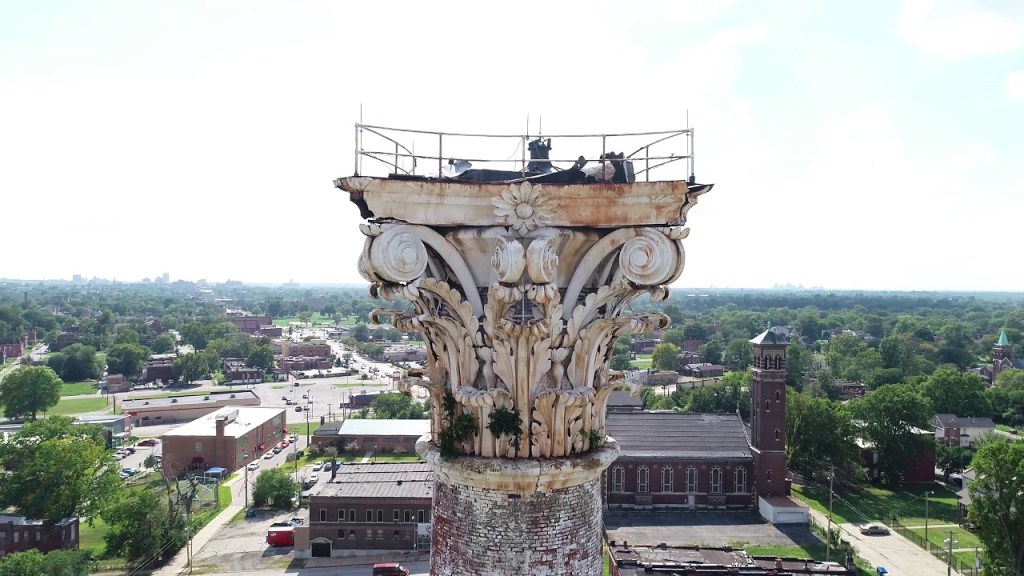
Taller than Pompey’s Pillar, a free-standing Corinthian column in Alexandria, Egypt, said to have been erected between 298 and 302 AD…

…and the Column of the Goths in Istanbul, Turkey, said to have been erected sometime between 200 and 400 AD.
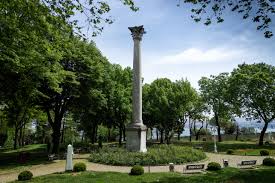
The last water tower I am going to look at is the Riverside Water Tower in Chicago, now an art gallery and museum.

Like the Grand Avenue Water Tower in St. Louis, the Riverview Water Tower was said to have been built in 1871, only by this one was said to have been designed by architect William LeBaron Jenney…
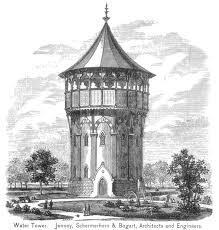
…and like the Sulphur Springs Water Tower, it was said to have had a free-standing elevator shaft erected inside the tower.
So what’s the real story here with all of these towers?
We are clearly seeing massive, advanced infrastructure with these examples that do not fit the stories we are told about them.
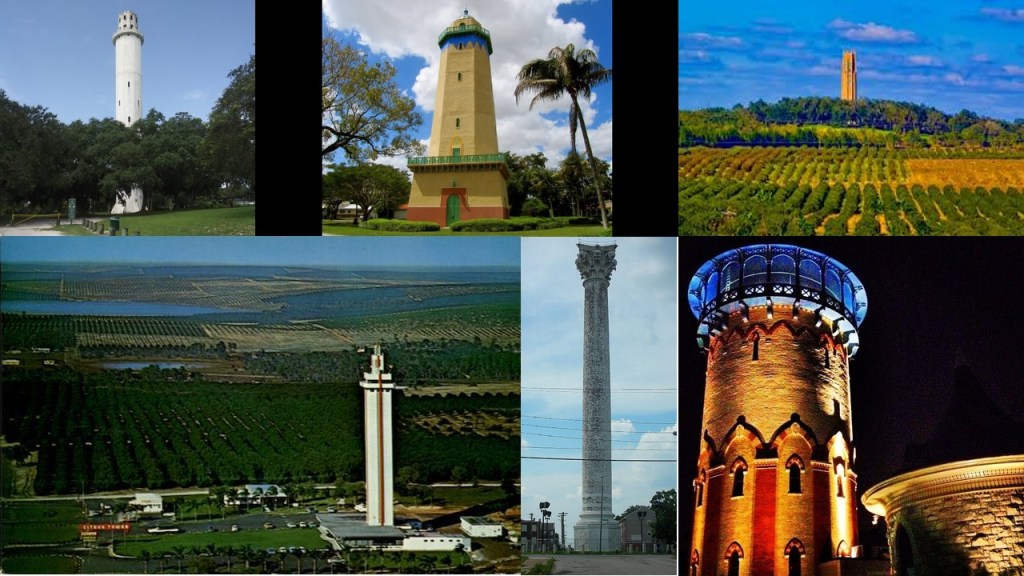
Back to Tampa.
We are told the history of modern Tampa begins with the founding of Fort Brooke at the mouth of the Hillsborough River, in what would today be downtown Tampa.

The town of Tampa was first incorporated in 1855, which lines up with what I believe was the official beginning of the new historical reset timeline in 1851.
Henry B. Plant was said to have laid the first railroad tracks in the area in the 1880s, which was said to have brought in the cigar and phosphate industries.
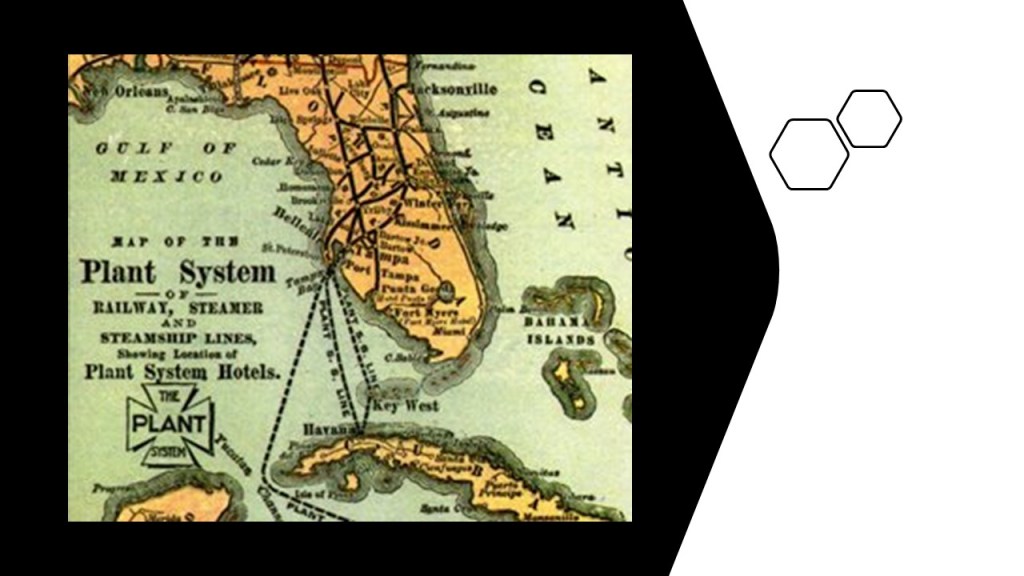
The Henry B. Plant Museum is housed in what was once the 1891 Tampa Bay Hotel, described as a Victorian railroad resort.
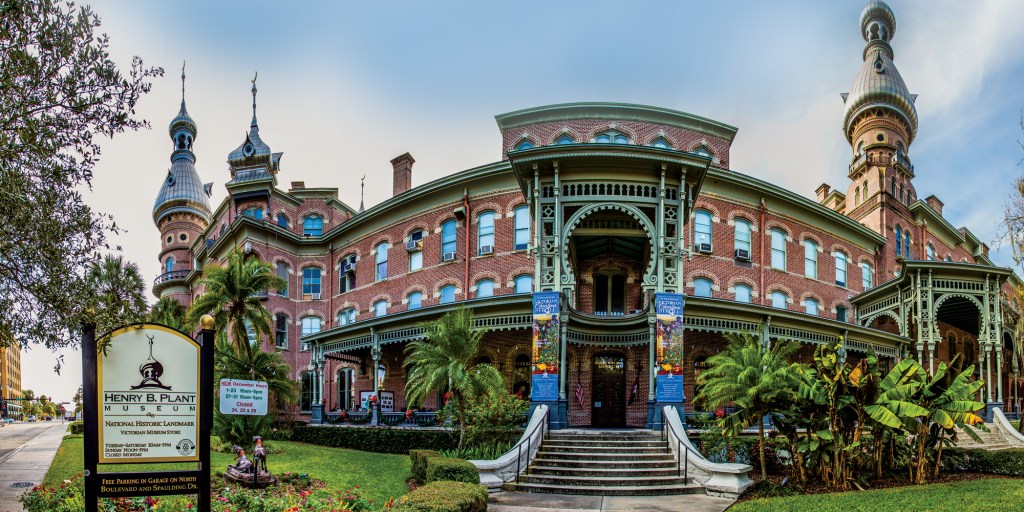
It is in the south-wing of Plant Hall on the campus of the University of Tampa.

Sulphur Springs is located six-miles north of downtown Tampa.
It’s southern boundary is the Hillsborough River; the northern boundary is Busch Boulevard; Florida Avenue, Nebraska Avenue, and the CSX Railroad line forms boundaries on the west and the east.

We are told that Native Americans drank from the springs the area is named for, who benefited from the medicinal benefits of the natural mineral water.
I noticed the Far North street names in the Sunshine State when I was driving around Sulphur Springs, like Alaska, Juneau, Sitka, Nome, Skagway, Yukon, Klondyke, Eskimo, and Seward, the name of the U.S. Secretary of State who signed the treaty for the purchase of Alaska from the Russians in 1867.
This seems odd to me. Like removing to a faraway place the actual identity of the people who lived here.
I have gotten a screenshot of Google Earth of where I primarily looked around in Sulphur Springs.
This is what I found at this first location marked by an “x.”

I looked around this side of the Hillsborough river, and found this tablet referencing this spot at the former location of the Van Dyke Bridge.
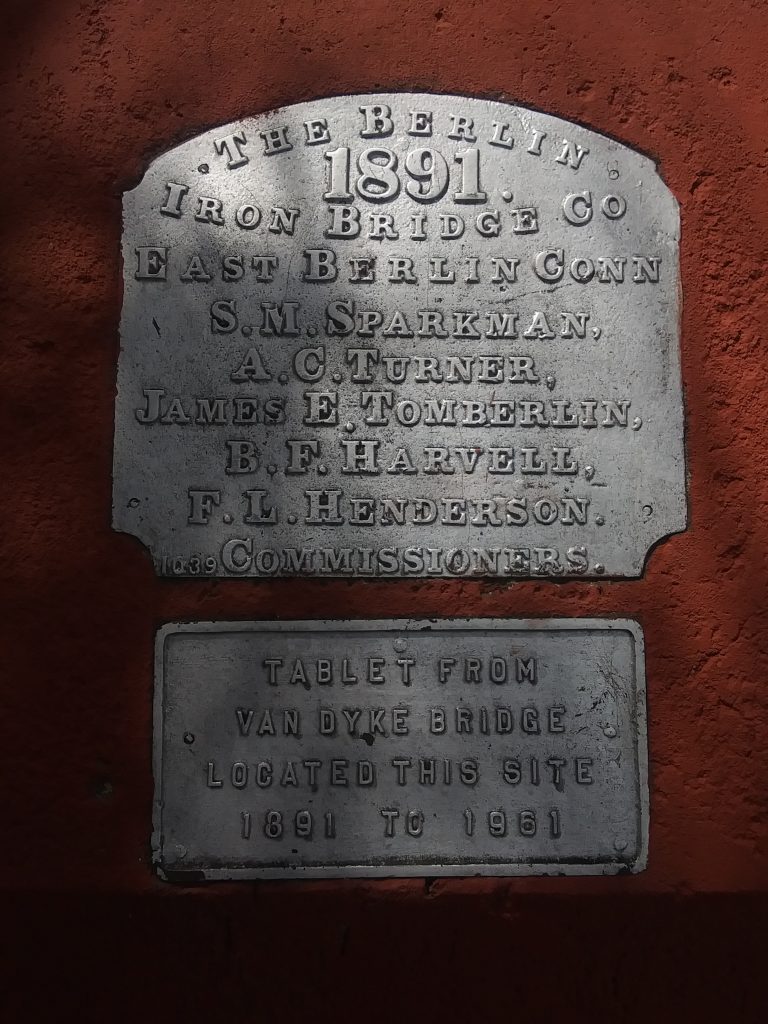
The Van Dyke Bridge connected Sulphur Springs with the Old Seminole Heights neighborhood of Tampa, the largest of three distinct city neighborhoods within the Seminole Heights District.
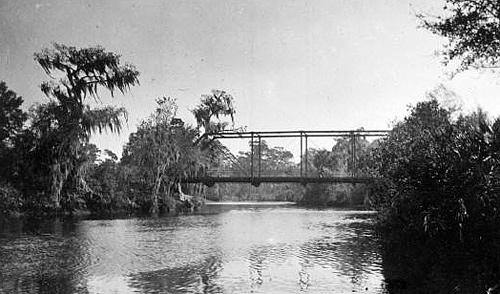
It existed there until 1961, and I can’t find information to explain what happened to it.
We are told Van Dyke Place was named for the man who owned a service station there in the 1920s.
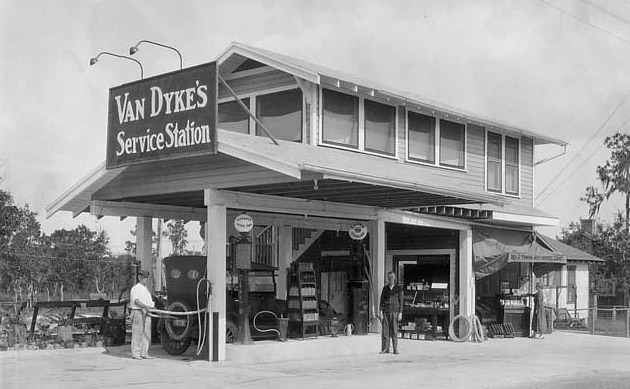
But who were the Seminole? What about them?
Why would this piece of land in Sulphur Springs be forever named for some guy who was a service station owner who was only there temporarily?
That’s like the magnificent mound-building civilization of North America being named the Hopewell Culture, also in 1891, after a family who owned the land that the Hopewell Mound Group earthworks were located on in Ross County, Ohio, and not having any connection made in the name with the indigneous people of this continent.

The Seminole of what is now Florida were considered one of the “Five Civilized Tribes,” indigenous peoples of the Americas who lived in the Southeastern United States, and described as part of the mound-building Mississippian Culture, along with the Cherokee, Choctaw, Chickasaw and Creek.

The Seminole Wars were on-going between 1816 and 1858.
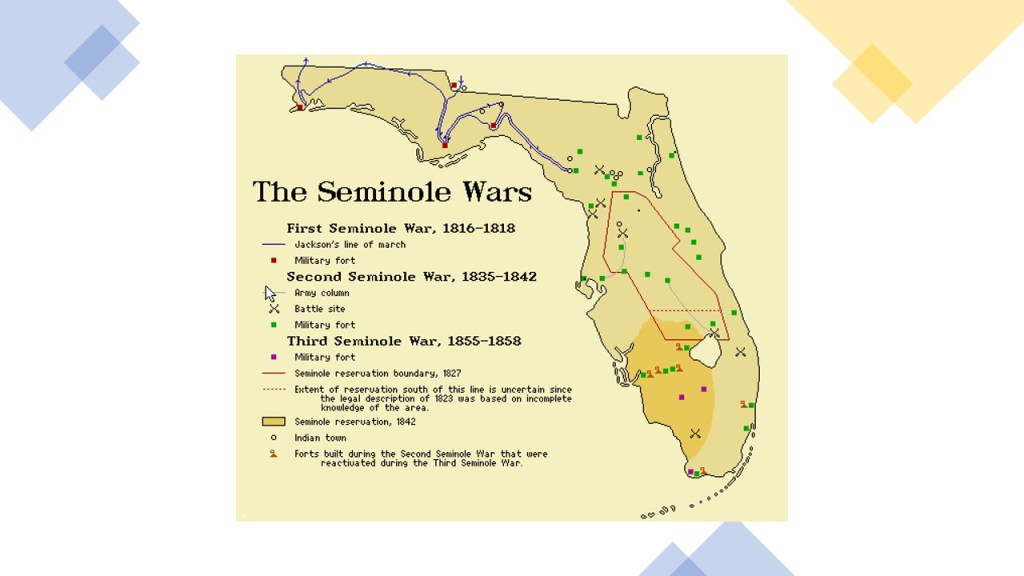
By 1842, most Seminoles had been removed to what was called the Indian Territory of Oklahoma, which was also by-and-large the fate of the other four civilized tribes…
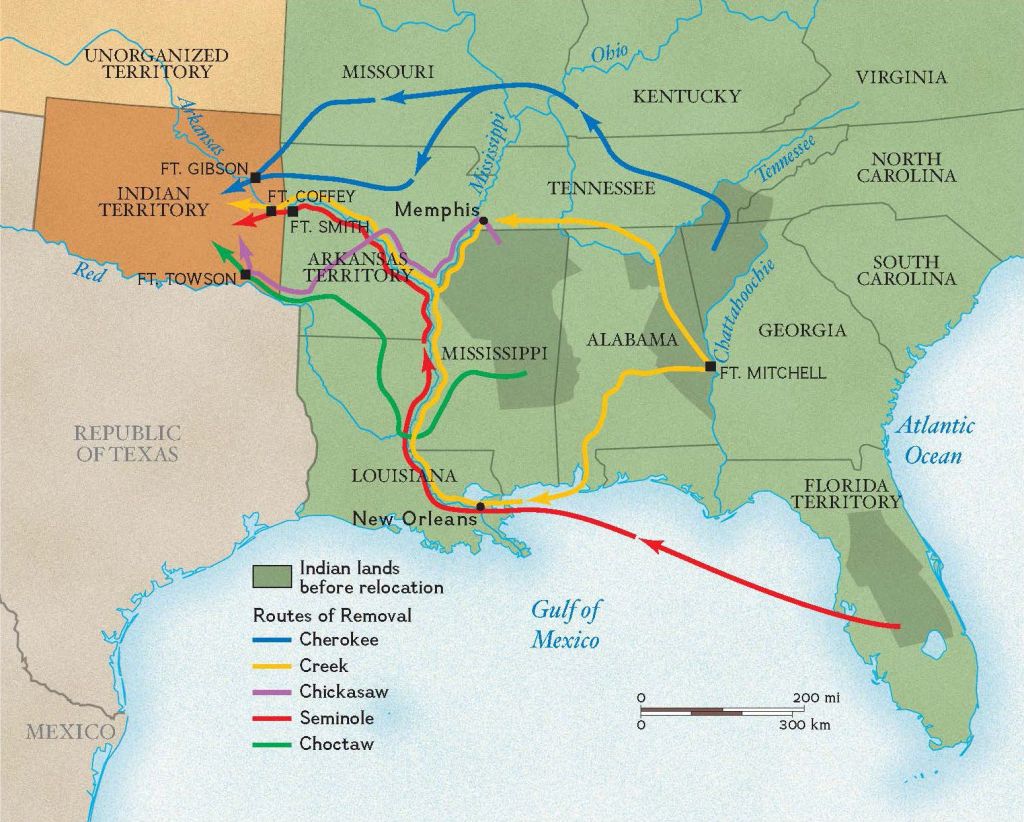
…and six Seminole reservations were established in Florida for the those remaining.

The Seminole never signed a Peace Treaty with the United States Government.
The Seminole, like the other indigenous people of North America, are typically portrayed primarily as hunter-gatherers, with huts being constructed from readily available materials.

There are acknowledged mound sites in Florida…

…so they were certainly part of the ancient mound-building civilization.
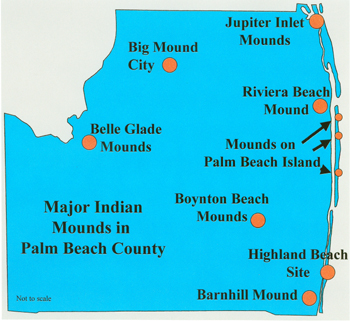
What else did the Seminole build?
Well, right next to the tablet memorializing the Van Dyke Bridge, I found these cut-and-shaped stones lying around in the overgrowth beside the Hillsborough River.

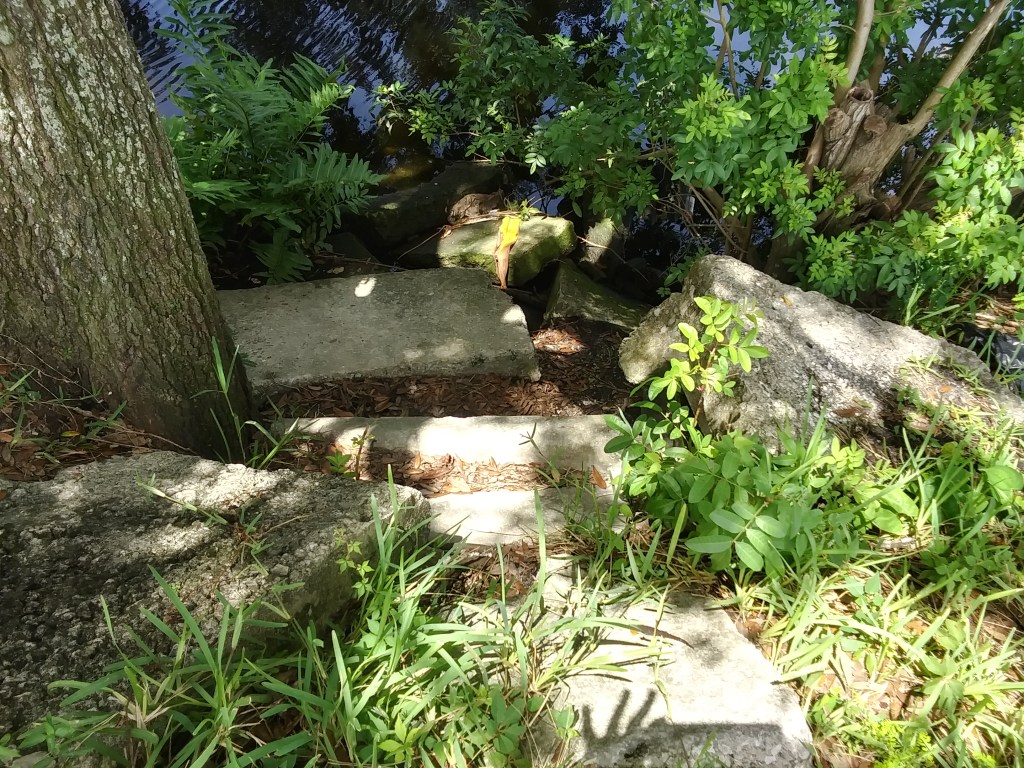
I noted the masonry banks of the river at this location, and will show other examples at different places.

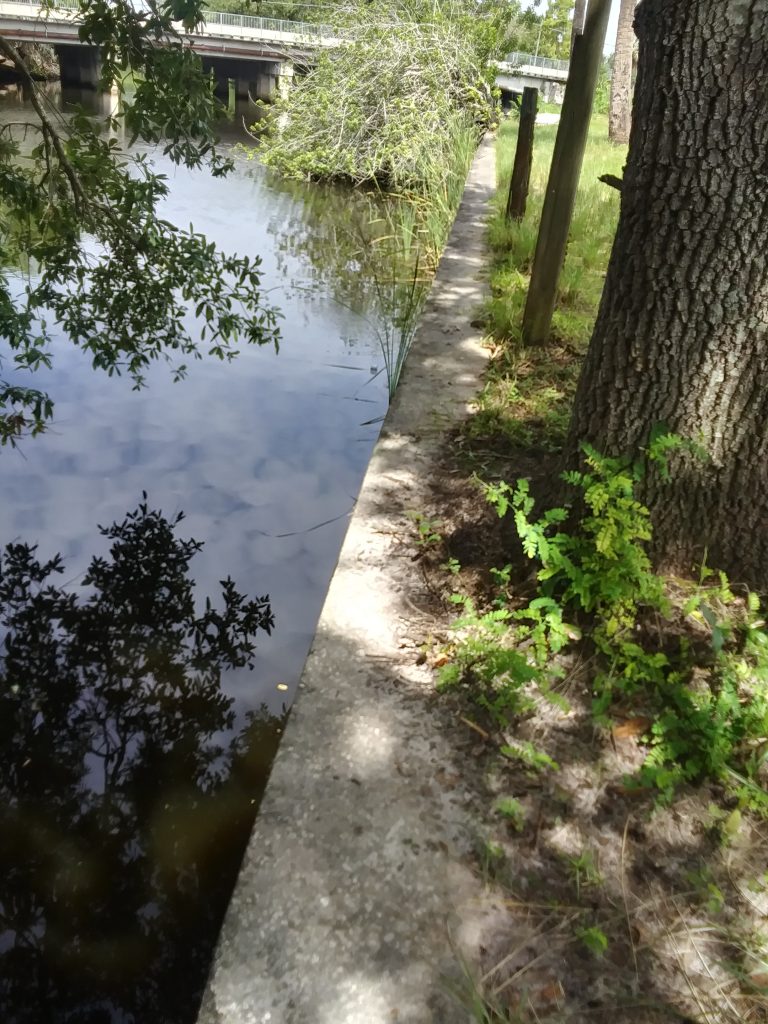
There is also a clear view of the Sulphur Springs Water Tower from Van Dyke Place.

In my driving around, I found the location of the Sulphur Springs Pool and Park.

This is the outside of the present-day pool facility…

It was located next to the Sulphur Springs Park, which has an old-world looking, domed-columned-arched pavilion, to which all access is blocked.

There is a nice view of the water tower from the park’s parking lot…

…and a view of more masonry banks further on down the Hillsborough River, a little ways from Van Dyke Place.

I became even more intrigued about this place the night I first found out the name of the water tower a couple of weeks ago, and the park’s history as the “Coney Island of Florida.”
Here is a historic depiction of the circular pool at Sulphur Springs with the waterfall…

…which looks like it still has a presence on the grounds of the Sulphur Springs pool in the present-day, according to Google Earth.
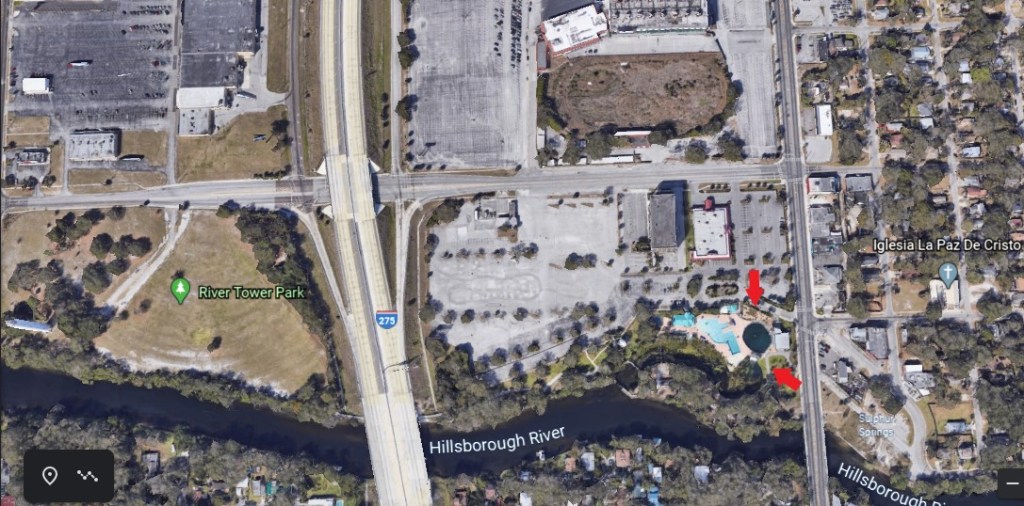
The historical Toboggan Water Slide of Sulphur Springs, however, is no where to be found.

…which looked to me like what was usually called the “Shooting the Chutes” ride at various Trolley-Park-Amusement-Parks across the United States, like the one at the Hudson River Valley’s Electric Park on Kinderhook Lake…
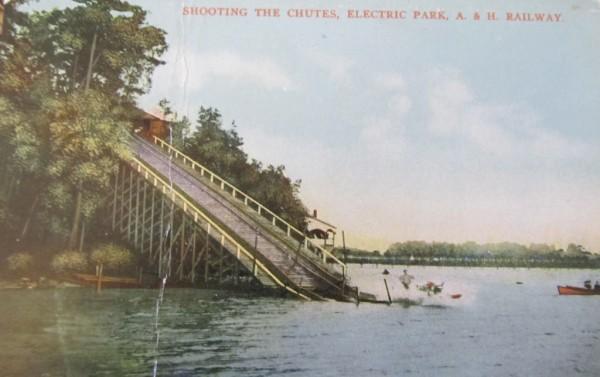
…and the one at the Wonderland Amusement Park in Indianapolis, Indiana.
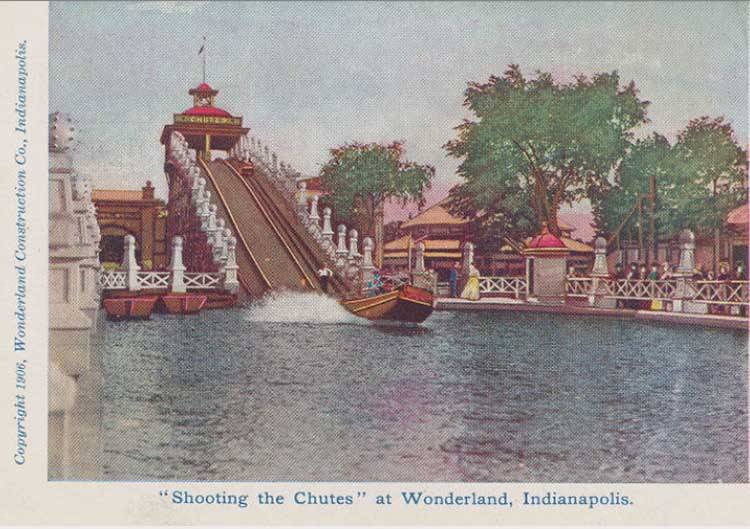
Trolley parks were said to have started in the United States in the 19th-century as picnic and recreation areas at the ends of street car lines, and were precursors to amusement parks. By 1919, there were estimated to be between 1,500 and 2,000 such parks. For example, Luna Park at Coney Island in Brooklyn was a trolley park.
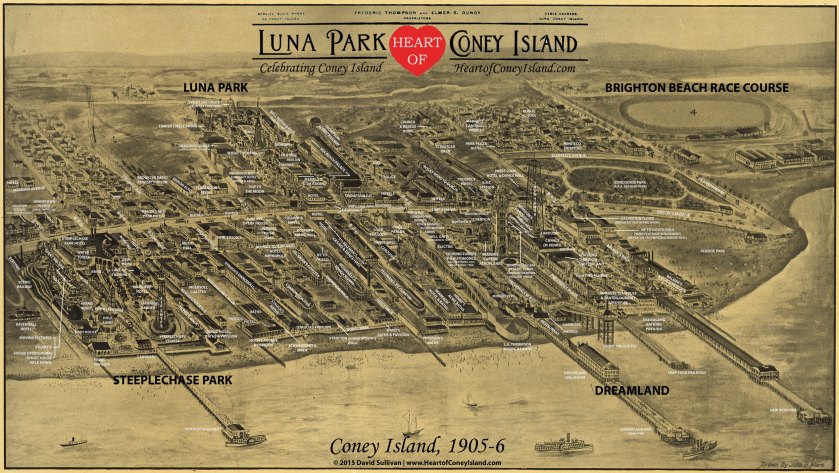
So, I was not at all surprised when I found out that Sulphur Springs was the end of a trolley line at one time.
Tampa was said by to have a steam-powered trolley system by 1885 carrying passengers between Tampa and Ybor City, and that in 1893, the Tampa Street Railway and Power Company converted its trolley system to electric-power from steam.
Sulphur Springs became the northernmost terminus of what was known as the Tampa Streetcar line, which TECO (Tampa Electric Company) took control of in 1899.
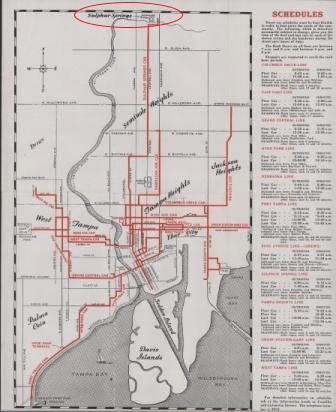
By the late 1930s, trolleys were in use in many cities, and by the end of World War II in 1945, Tampa and St. Petersburg were the only Florida cities with trolleys.
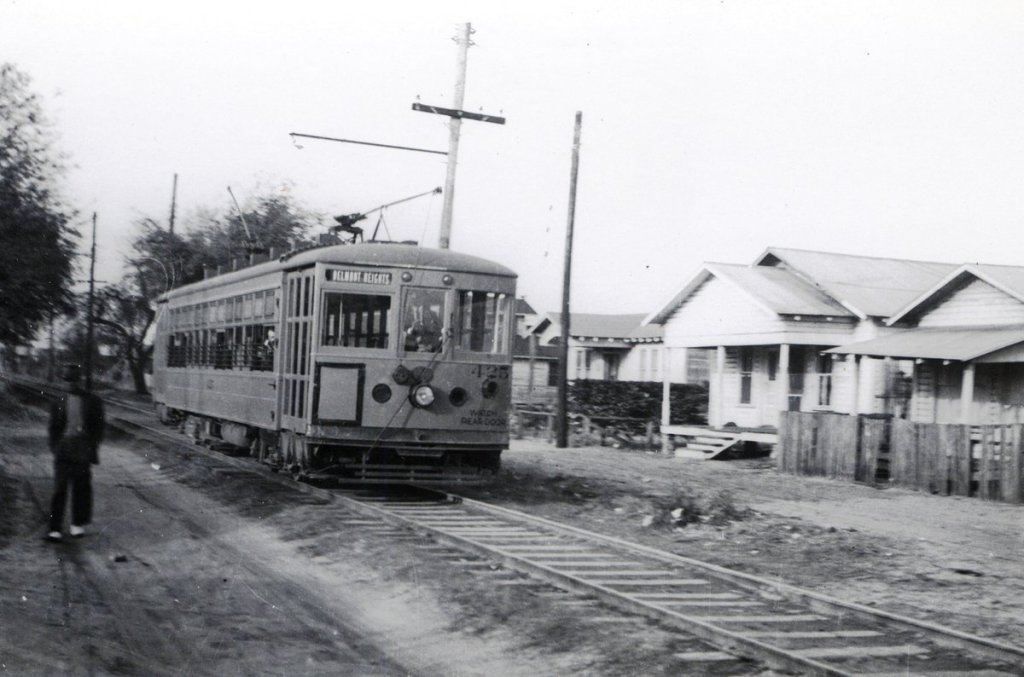
Then on August 4th of 1946, the last Tampa electric trolley was retired. The overhead wires were eventually taken down, and the rails paved over.
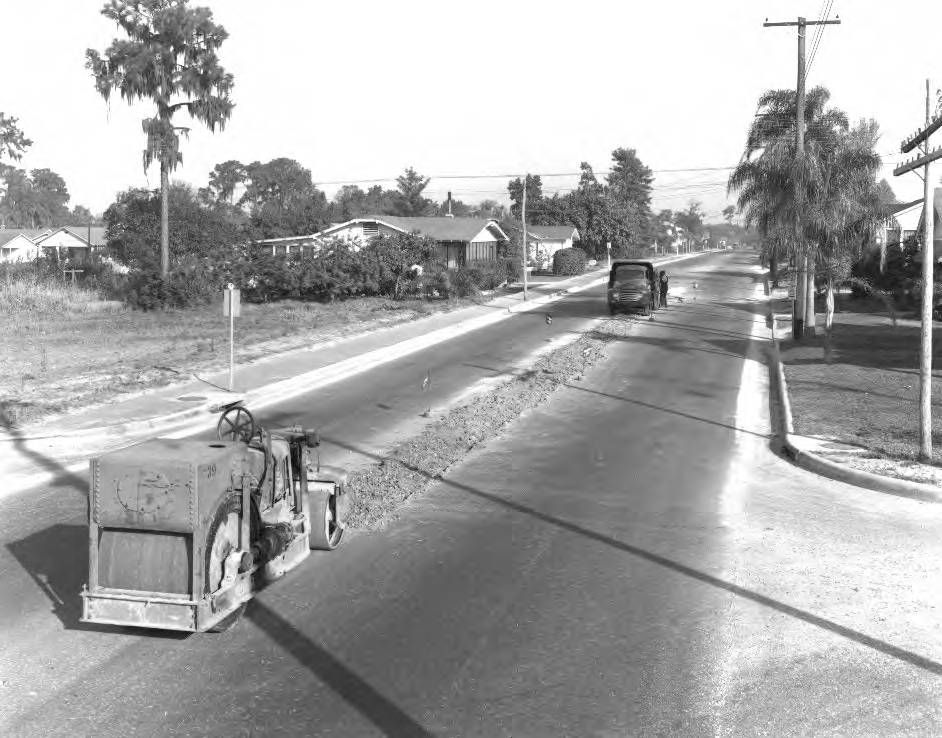
Today, TECO operates a 2.7-mile trolley line in downtown Tampa between the city’s Channel District and Ybor City…
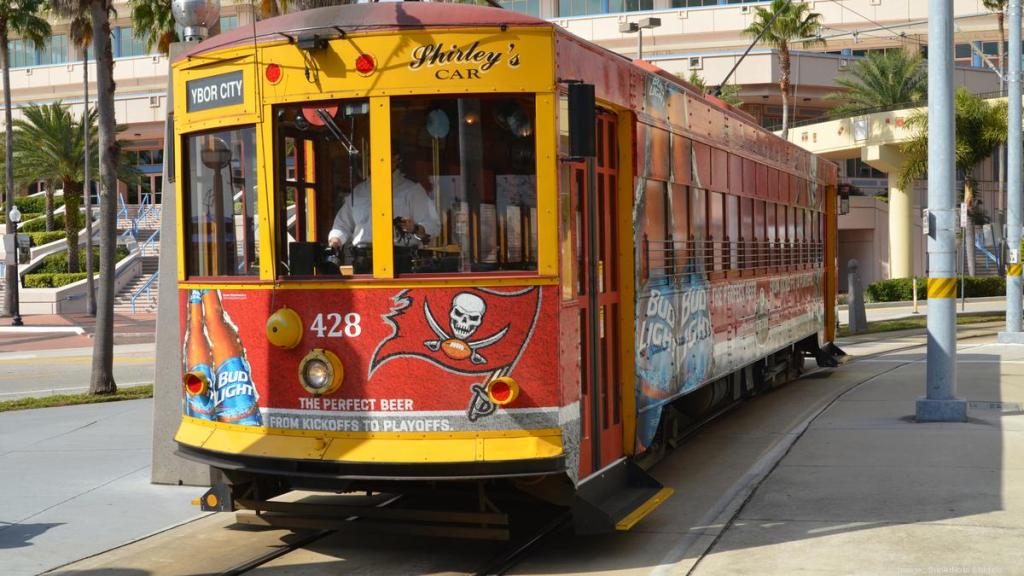
…the only remnant of what was once an extensive trolley system here.
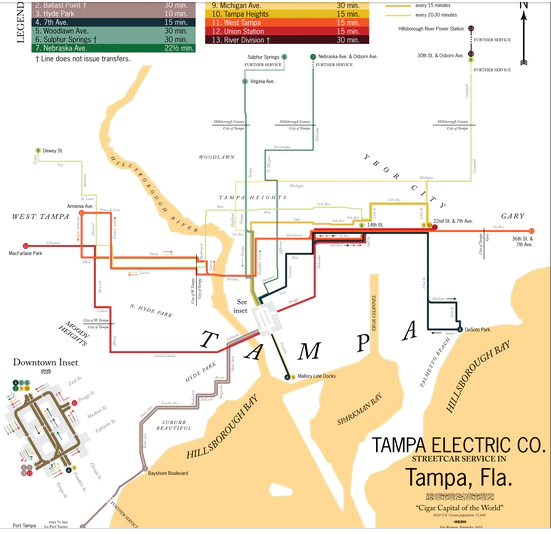
Other Florida cities had electric trolley systems at one time, like Miami between 1909 and 1940…

…and in more recent years, had the trolley return for public transportation in the form of a bus service.
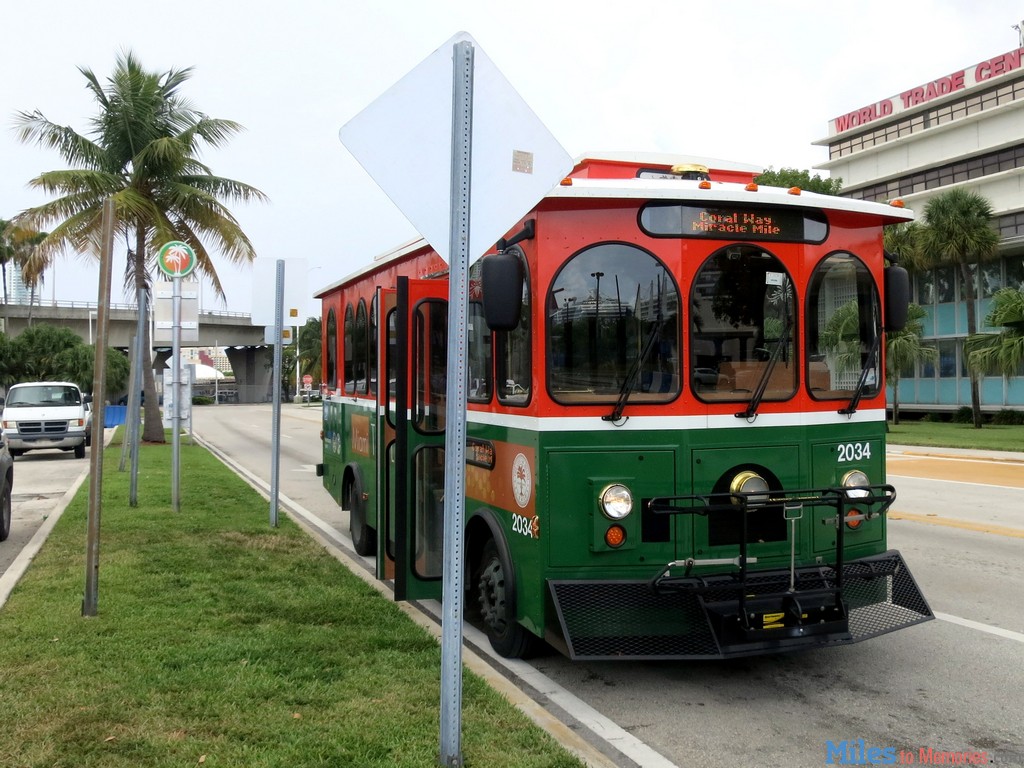
Early photos of trolley cars show them being drawn by mules, like this one in Boston, Massachusetts.
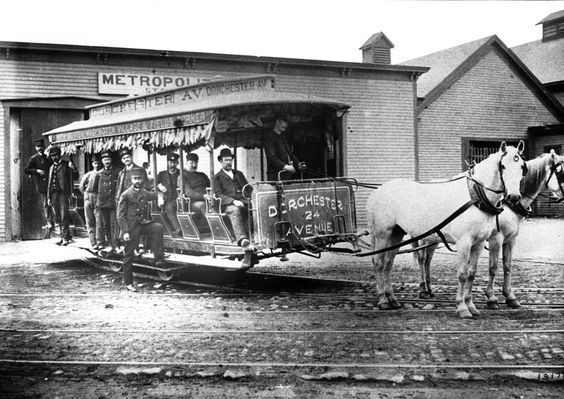
Then, here is an historic photo of an electric trolley in Jacksonville, Florida, running on tracks in a dirt-covered street, side-by-side with a mule-drawn buggy.
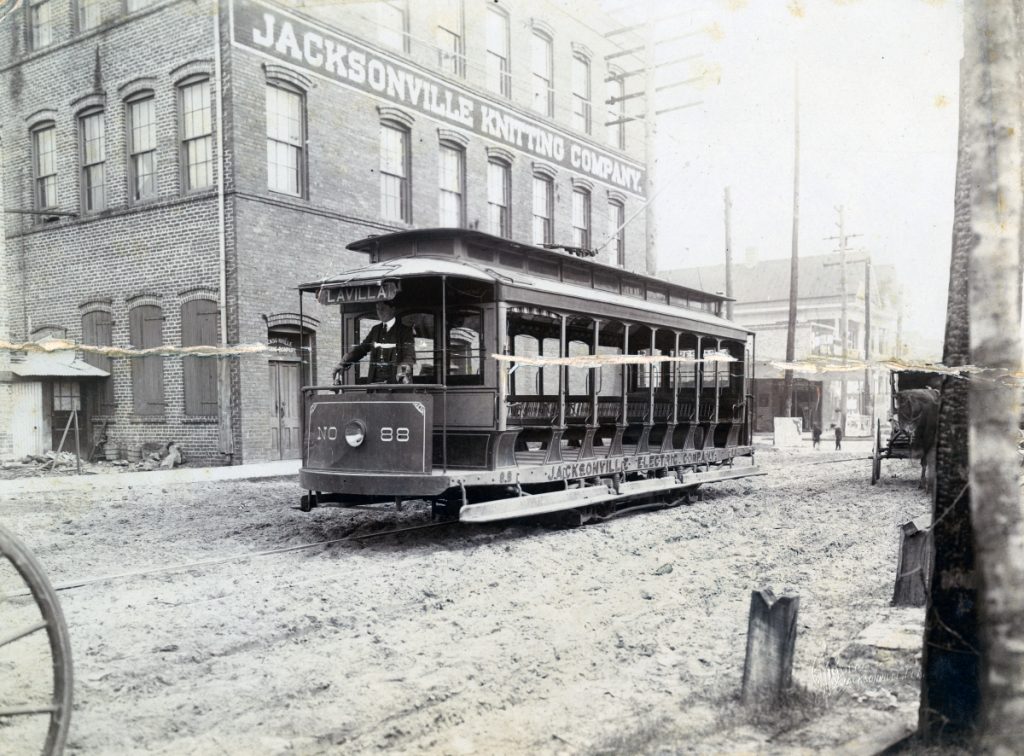
Same idea in Athens, Georgia.
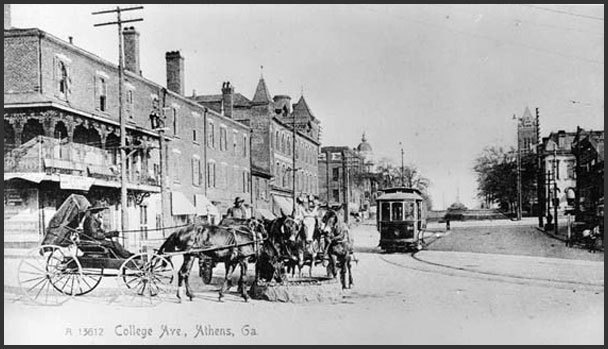
How do we reconcile having the technology to build an electric trolley system and at the same time be dependent on mules for propulsion?
And why did the trolleys and the trolley parks go away?
I mean, it sure seems like the electric trolleys were made to get up and running until cars and buses could replace the electric trolley systems as the primary mode of transportation, and then they were mostly gotten rid of as quickly as possible.
Was this in order to make an exorbitant amount of money from the oil and gasoline needed to run cars and buses, instead of the electricity-efficient and extensive trolley car systems which were in place everywhere around the world?

And what happened to all the trolley parks?
With the example of Sulphur Springs, outside of the one circular pool and waterfall in the current Sulphur Springs pool set-up, there is nothing left to show there was once anything like an amusement park venue and trolley line once here.
This is said to be a 1922 fire insurance map of Sulphur Springs Park.
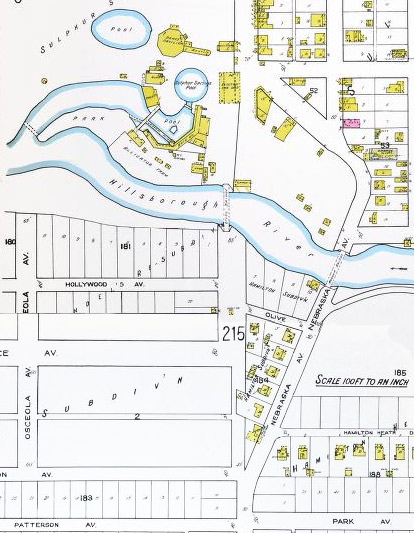
I don’t know about the one in Sulphur Springs, but many historical trolley parks were destroyed by fire a long time ago, like the Exposition Park that was destroyed by fire in 1908 at Conneaut Lake in Pennsylvania, as one of countless examples.
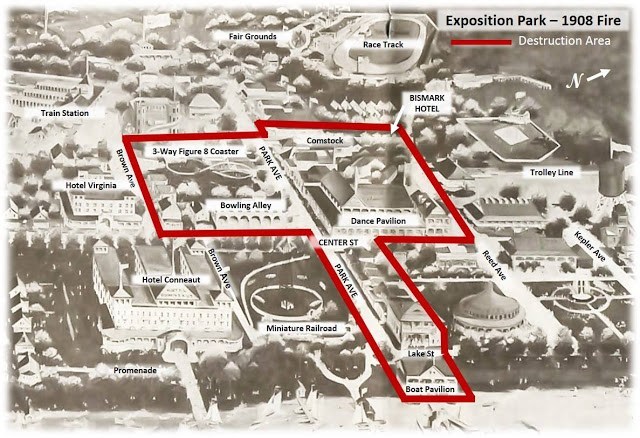
I tend to think there was a major connection between the advanced, ancient Moorish civilization which built all of this rail and amusement park infrastructure as part of the Earth’s grid system that the Earth’s new controllers mostly deliberately destroyed.

This is an historic photo of Luna Park in Sydney, Australia, circa 1935…
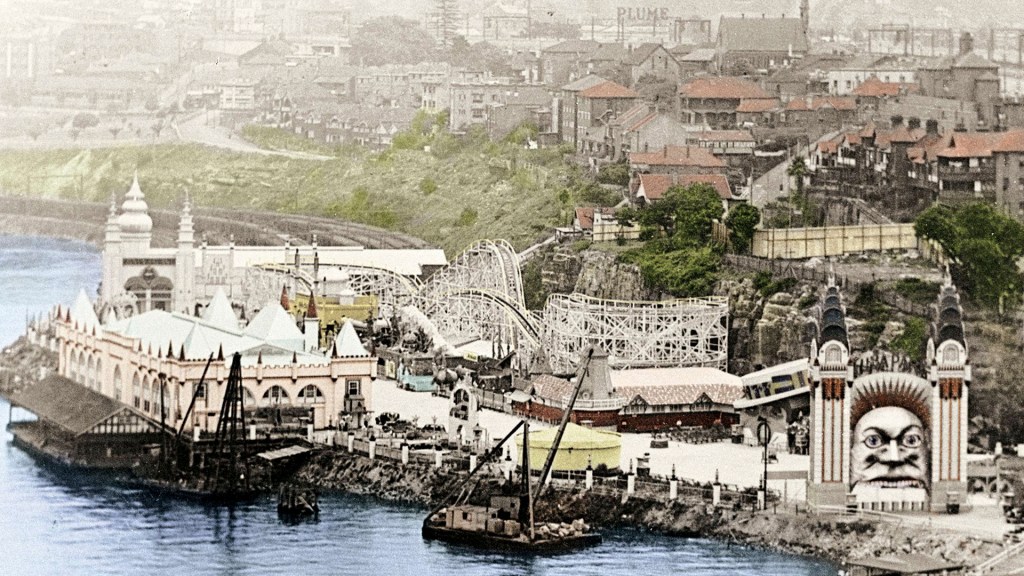
…and Luna Park in Sydney today, with a completely different face at the entrance.

This brings me to the Busch Gardens in Tampa, located just slightly to the northwest of Sulphur Springs.

The “Busch Gardens” name was first used in reference to gardens developed near Pasadena between by Adolphus Busch, the co-founder of Anheuser-Busch with his father-in-law Eberhard Anheuser…

…where we find interesting-looking mounds, also known as earthworks.
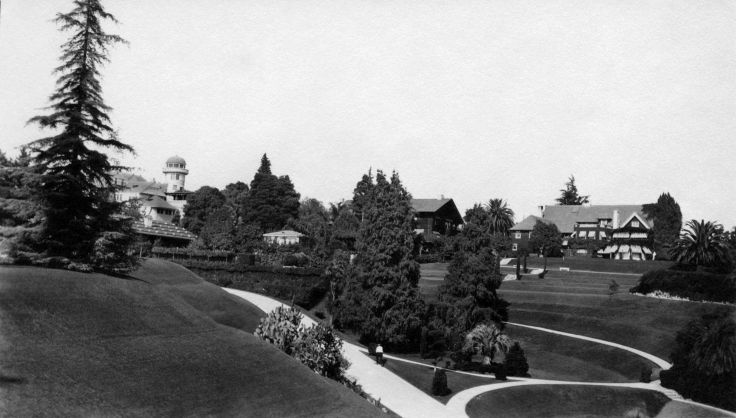
They were said to have been open to the public between 1906 and 1937.
The Busch Gardens amusement parks were developed initially as marketing vehicles for Anheuser-Busch, and Busch Gardens in Tampa opened on March 31st of 1959 as a hospitality-facility for an Anheuser-Busch brewery which provided visitors with the opportunity to taste beer.
It is known for the African theme of the park.
There was no charge for admission at that time.
We are told there initially was a bird-garden and an escalator called “Stairway to the Stars,” which took visitors to the roof of the brewery where the tour began.
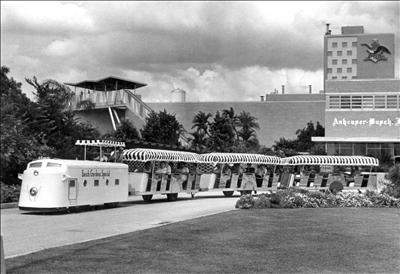
Rides and attractions were added, developing into a full-theme park while still promoting Anheuser-Busch beer.

I really see this development of associating beer with amusement parks as a “bread and circuses” approach by those behind the concept of the New World Order to facilitate lowering our level of consciousness by introducting the consumption of beer, and facilitating its association with fun and rides.
And I absolutely believe that the locations of amusement parks were important places on the Earth’s grid system, as electricity-generators, -receivers, or both, with the amount of electricity needed to operate all of the rides and everything associated with them.
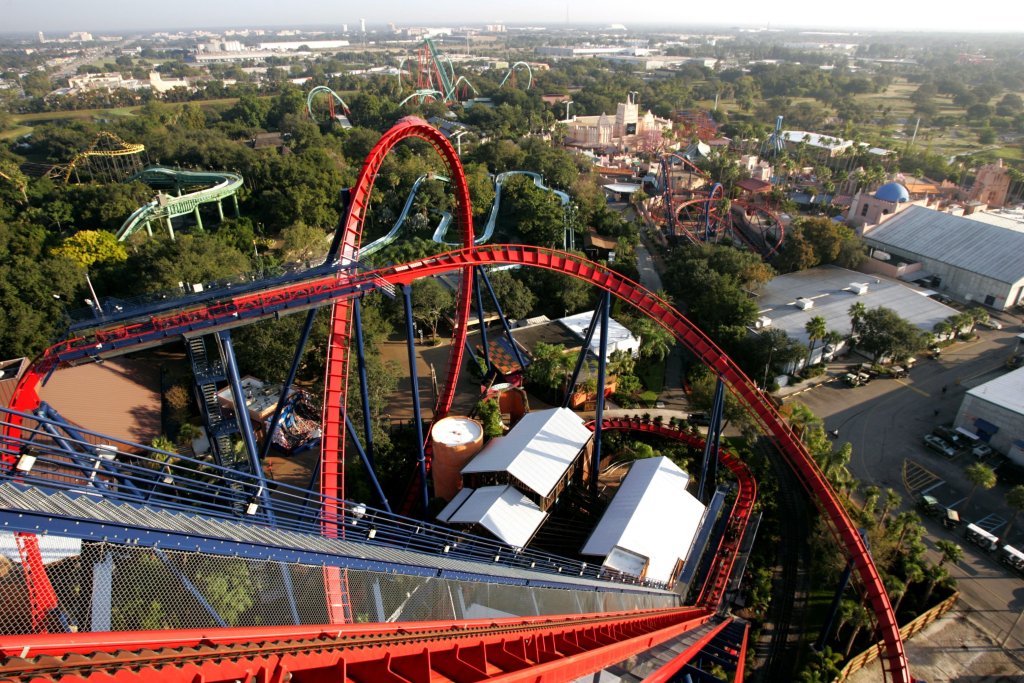
Just a few things to mention about Busch Gardens as it relates to my recent trip.
I took note from outside the park of the Moorish architecture of what is called the “Moroccan Palace Theater,” an entertainment venue, next to the wall separating the park from Busch Boulevard.

And here are some pictures of what it looks inside the park.
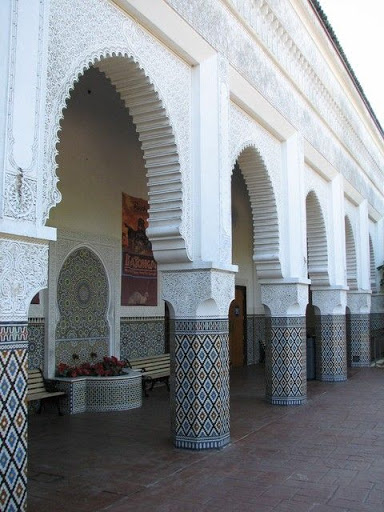

On Google Earth, I checked out the part of the park I was curious from what was showing above the wall, but I couldn’t tell exactly what it was.
Like the roof of what I think was this structure…
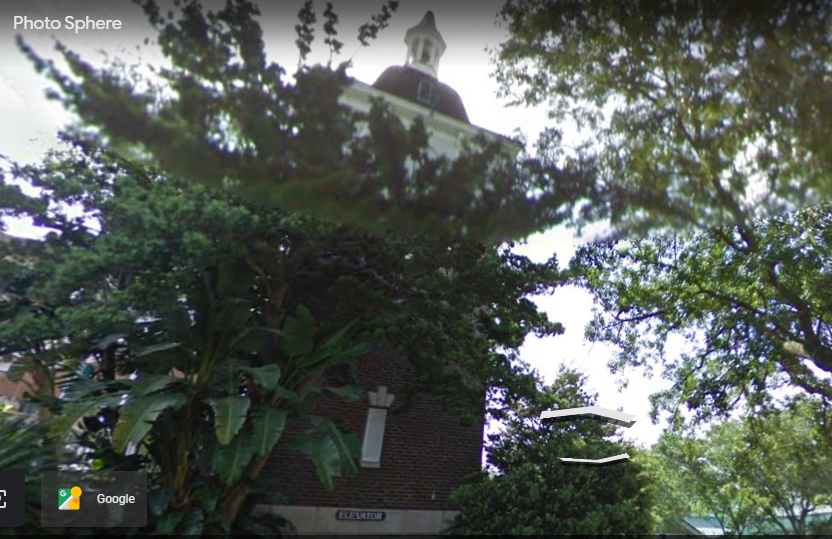
…and when I was looking around this part of the park on Google Earth, I came across this view of what looks like an old wall, with arches and triple windows…

…which appears to be part of the Cheetah Hunt coaster.
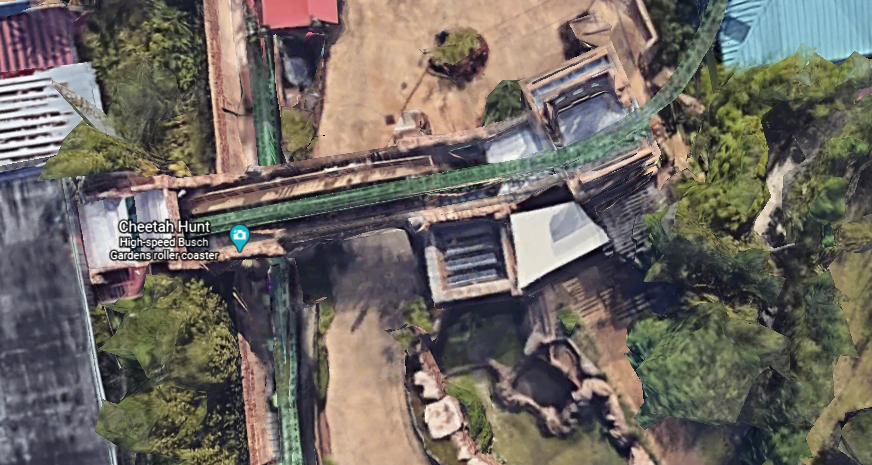
I travelled east along Busch Boulevard where it goes through unincorporated city of Temple Terrace, as I was heading towards a place where I could get a view of the canal I spotted on the east-side of Tampa on Google Earth.

It is known as the C-135, or Tampa By-Pass Canal, a 14-mile, or 23-kilometer, waterway that connects the Lower Hillsborough Wilderness Preserve with McKay Bay, said to have been built in the 1960s and 1970s as a flood control project.
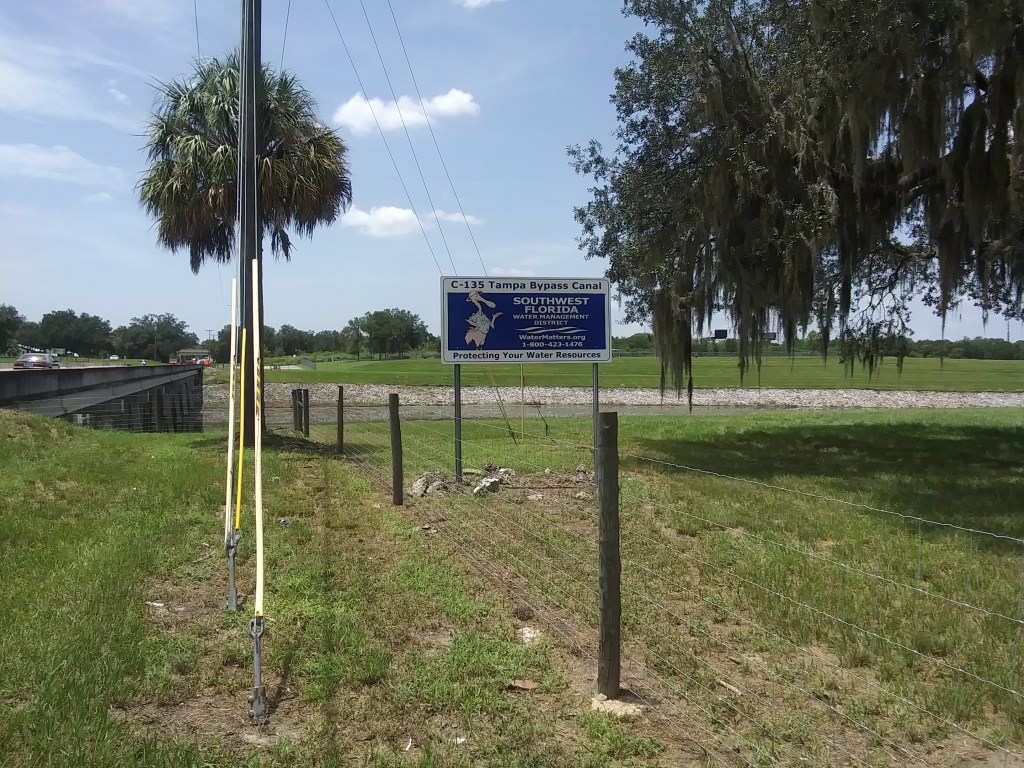
It also functions as a source of drinking water for Tampa.
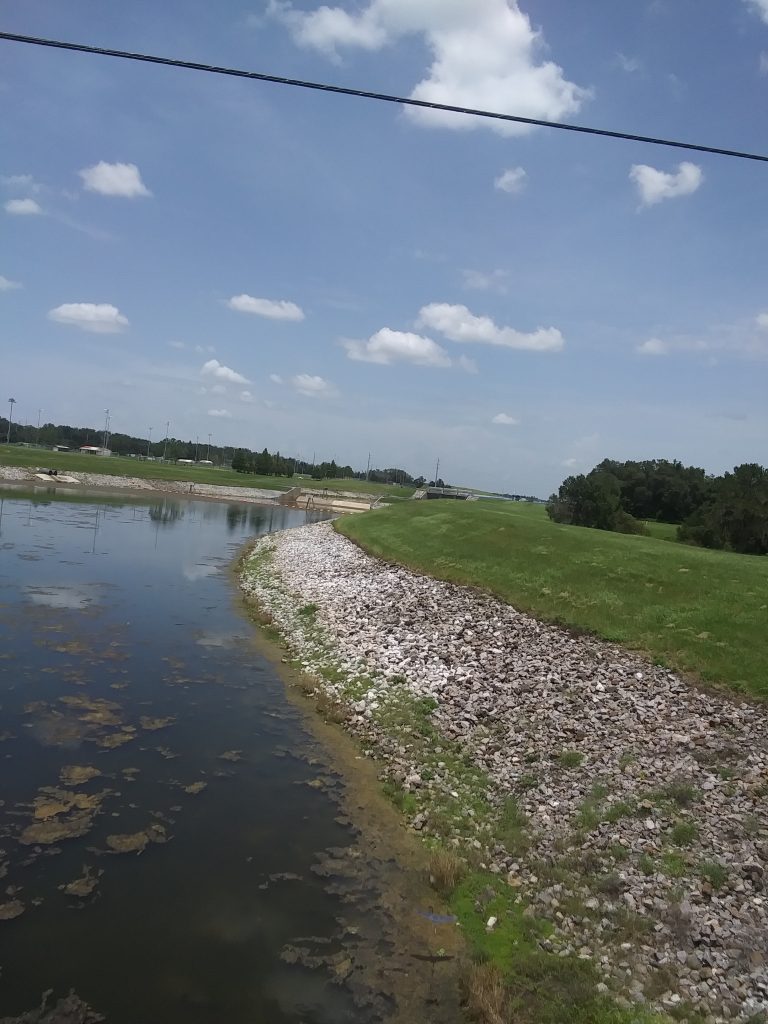

One of the reasons I made it a point to see this canal is because of the Arizona Canal, which I took note passing by it on I-17 going through Phoenix because it has an amusement park called “Castles and Coasters” right next to it…

…which has Moorish-looking attractions at the park.
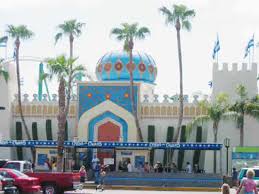
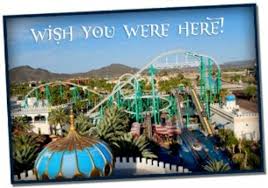
Another similarity in the landscape between what is found in Tampa and Phoenix is this comparison between the Hillsborough River in Tampa and the Salt River in Arizona, which actually goes through Phoenix but is mostly dried up where it runs through the city.
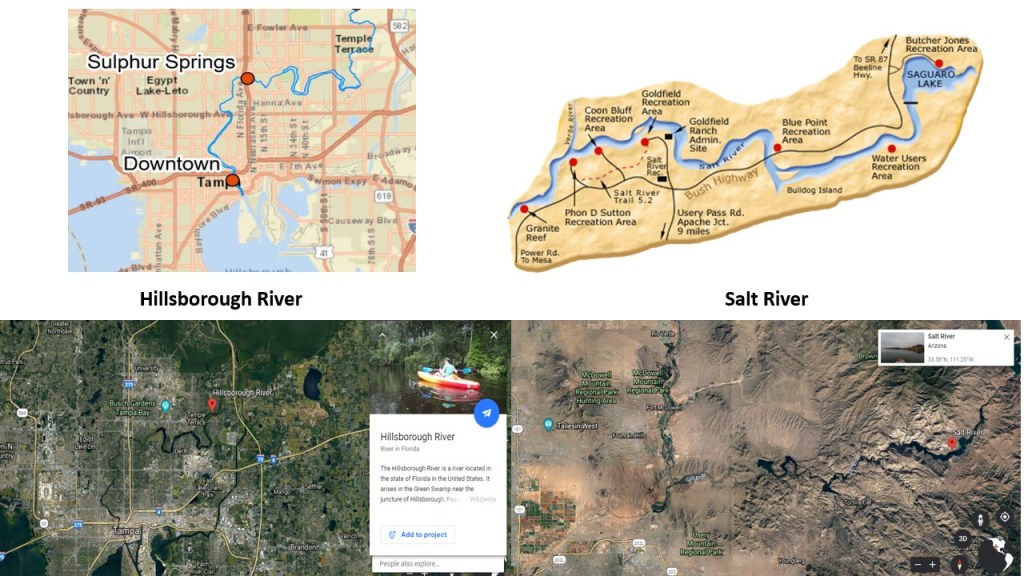
I believe these so-called natural rivers are man-made waterways, and there are countless examples on the Earth of the same snaky, s-shaped riverbends, like the Ouachita River where it flows through Monroe in Louisiana…

…the Mississippi River, as seen here in Vicksburg, Mississippi…
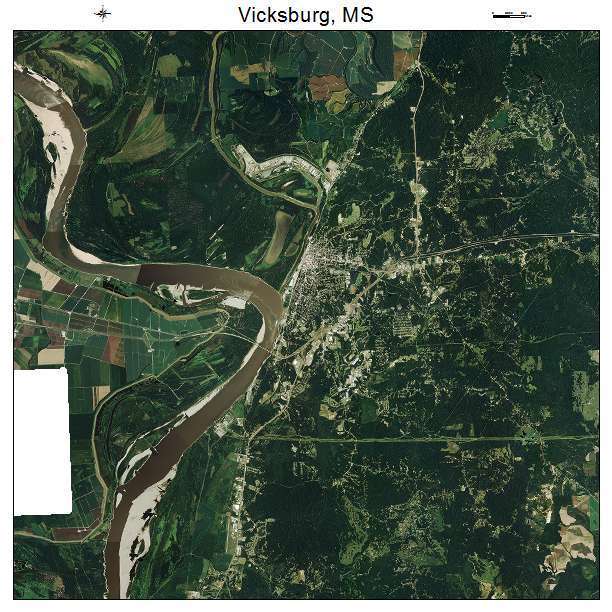
…the Nile River in Sudan in Africa…

…and the Thames River as it flows through London as seen here.
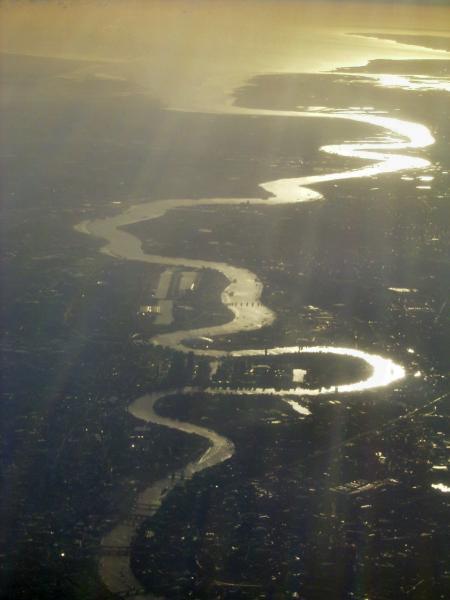
Here’s an s-shaped bend of the Hillsborough River where it goes through the Lowry Park Zoo, which is in Old Seminole Heights near Sulphur Springs, with its masonry banks…
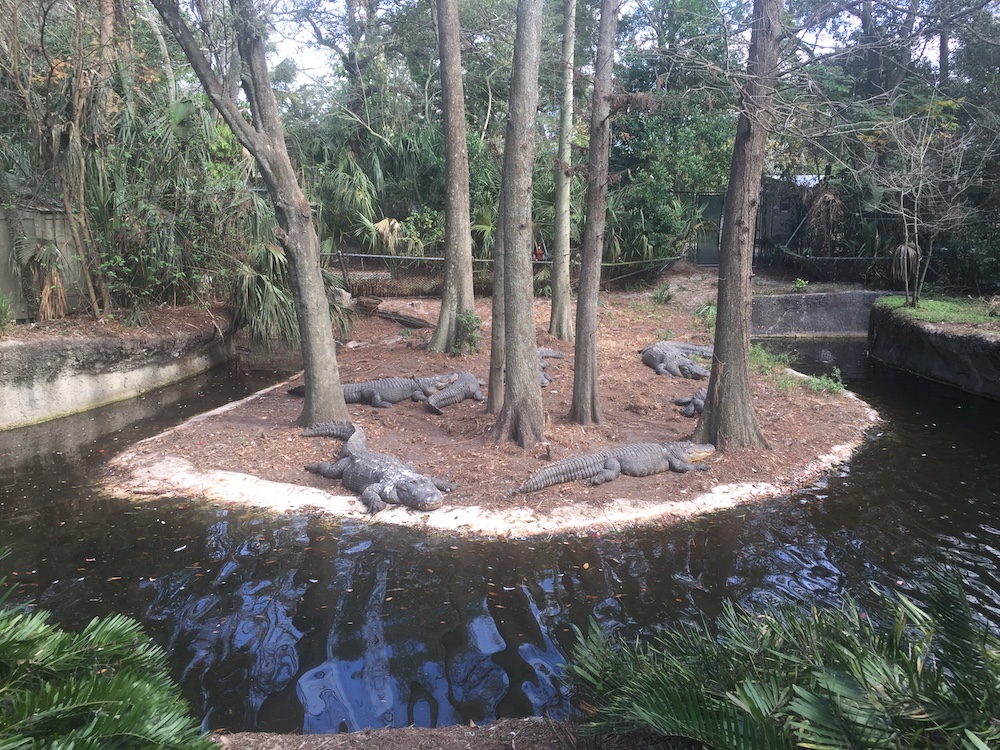
…and here are views of the Hillsborough River on Sligh Avenue near the Lowry Park Zoo entrance, like the masonry banks I showed earlier in Sulphur Springs.

On my way back through Temple Terrace on Busch Boulevard after visiting the C-135 Canal, I stopped at Florida College to take pictures because of the Moorish architecture I saw there on my way to the canal.
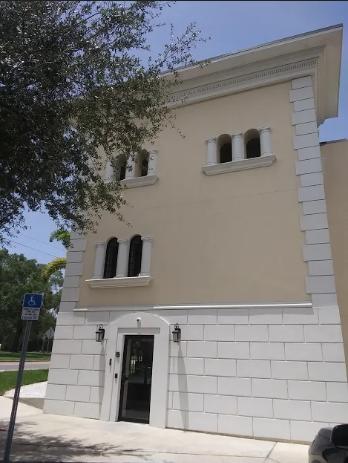
As I went around this building called “College Hall,” I started noticing classic mud flood evidence of ground-level windows and underground levels.


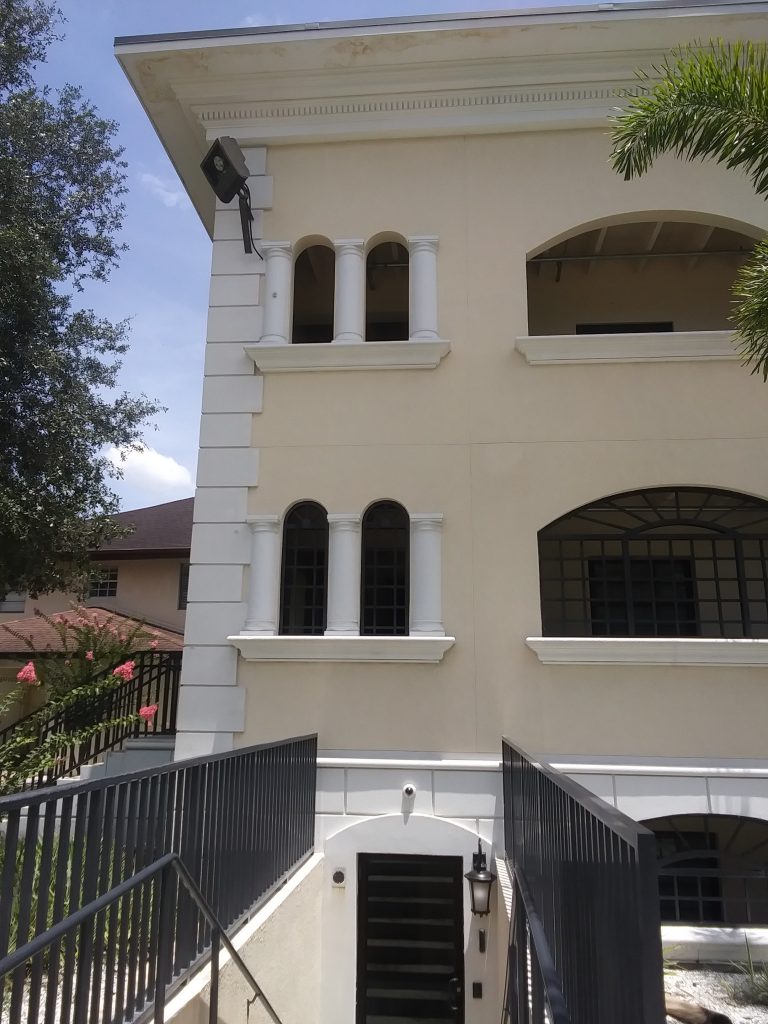
I saw the same idea at the Stulgis-Akin Hall on Campus…
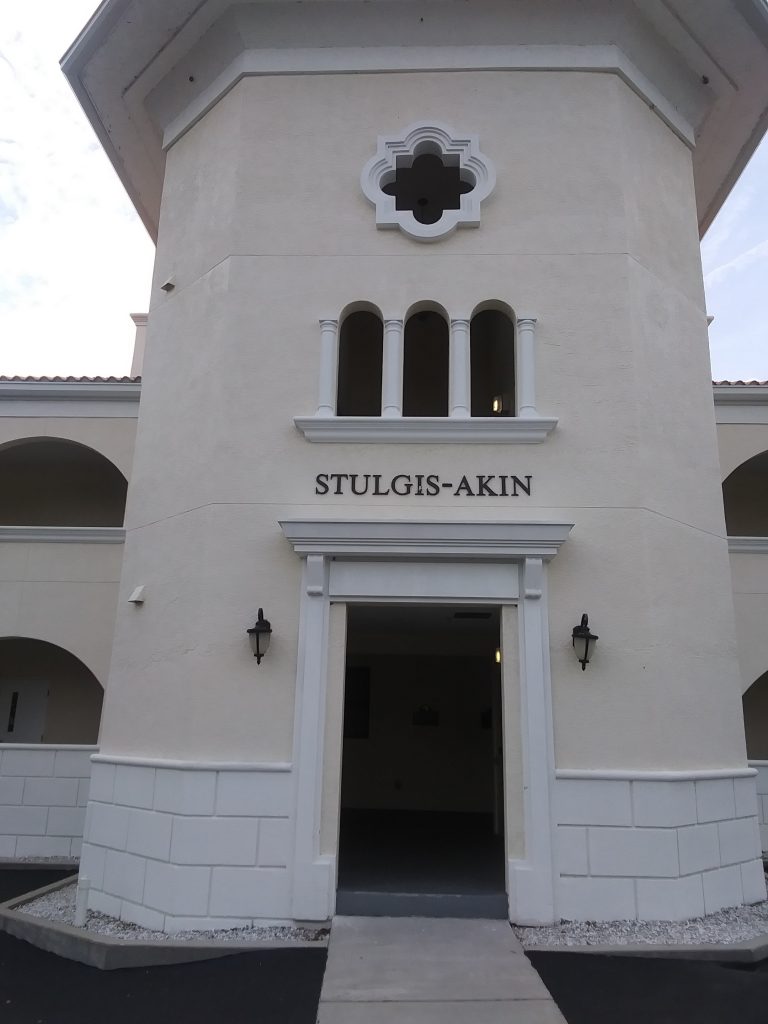
…with uneven masonry along the base of the building, going across it from right…

…to left.

Here is Jennifer Hall on campus…
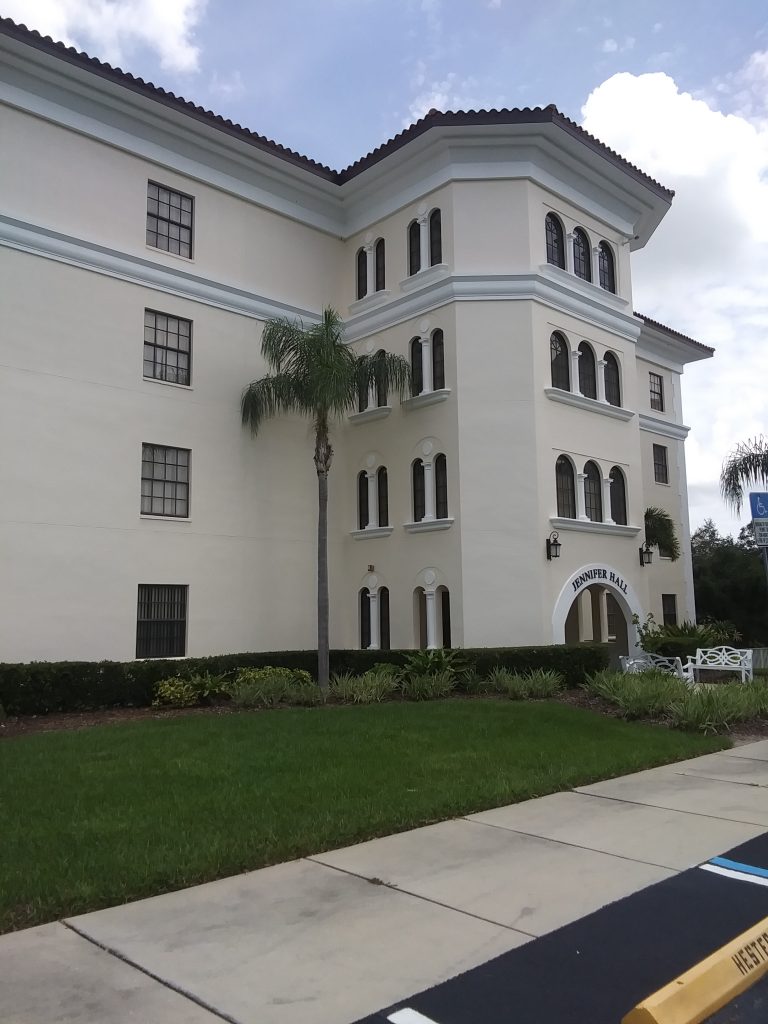
…and remember the triple windows I showed you at the Cheetah Hunt coaster ride in Busch Gardens?
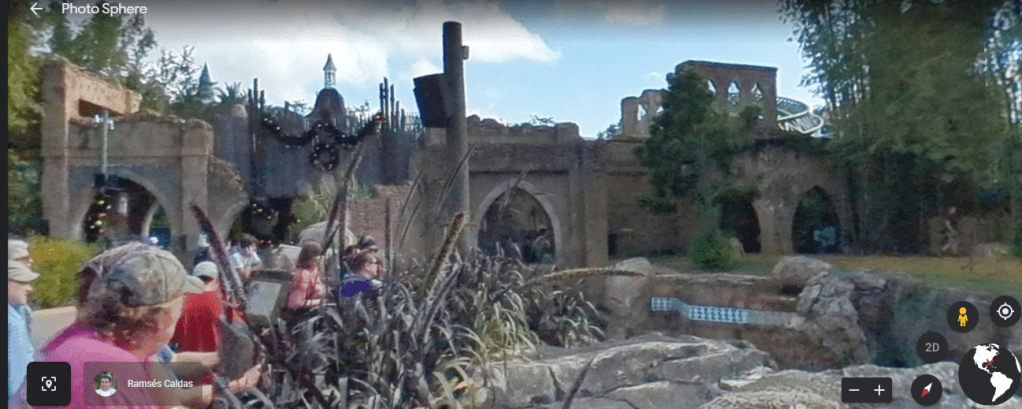
Triple and double windows are signatures of Moorish architecture.
Who do I think really built everything?
Master Moorish Masons of the Ancient Ones.

I believe the Moorish Legacy was stolen…

…when the Earth’s positive timeline was hijacked by what I believe was a deliberately caused cataclysm, creating a flood of mud which wiped out the original civilization.
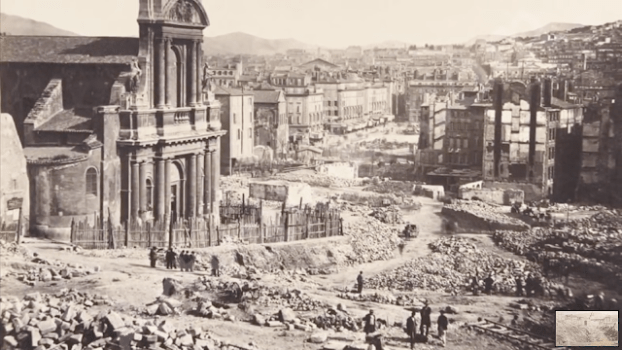
…and that the new historical reset timeline officially started in 1851.
We have been indoctrinated in a false historical narrative from cradle-to-grave ever since then.
The first Freemasonic Grand Lodge – the Premier Grand Lodge of England – was founded in London, on June 24th, 1717…
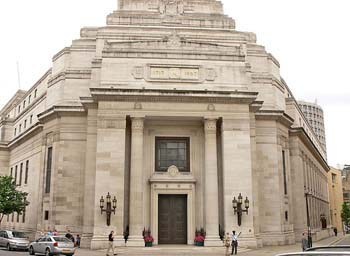
…the exact mid-year point between 1492 and 1942, which I believe are the most significant years of the new New World Order timeline that was created from the original Old World Order.
Was freemasonry so named because all of the Old World infrastructure was “free for the taking?”
Freemasons weren’t the only players involved in deconstructing the Old World and creating the New, but they have been significantly involved in what has taken place.
Fittingly for my brief stay in Tampa, I noticed there was a Masonic & Fraternal Supply store right across the street from my motel on Busch Boulevard.
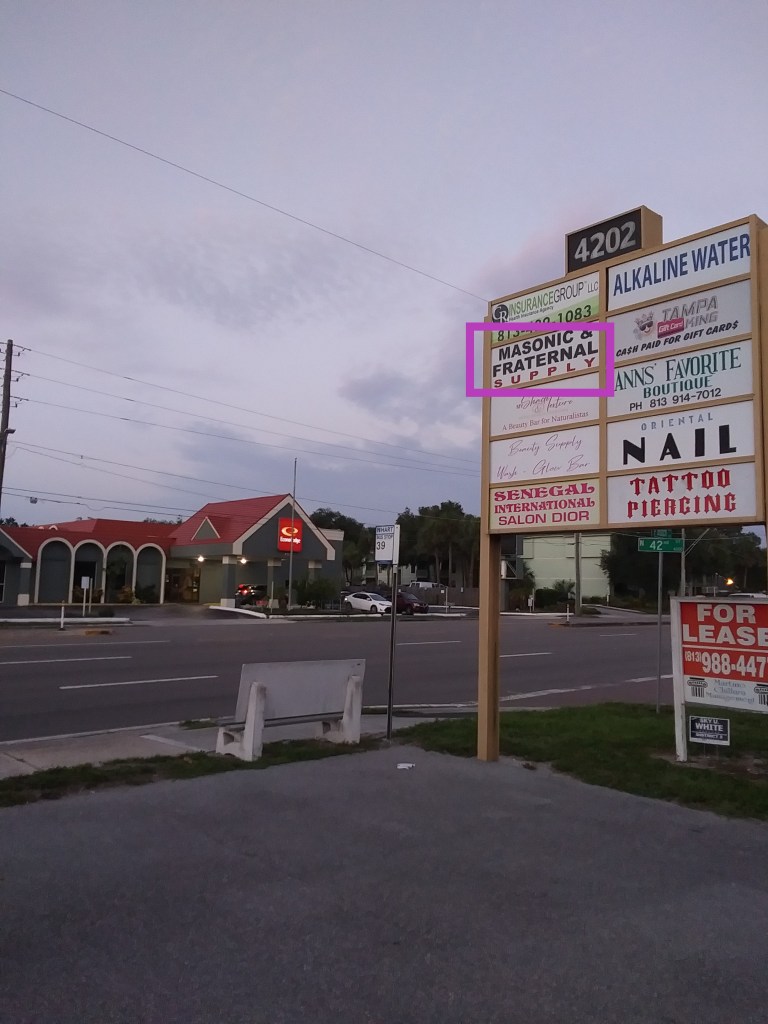
While I could go on and on, I will go ahead and end here.
In my next post, I will be looking at the islands of the English Channel, which was going to be my next post last time until this one from my trip came up.

Wow. So much to take in. You have uncanny detective abilities. What you were able to capture and visit in such a short time is impressive. The story is hard to get my head around. It’s HUGE and so encompassing. Here is a website describing the Cape Hatteras lighthouse. We visit this area annually to kitesurf. The timeline of construction and decommissions seem to fit. We will investigate further in our return next spring. Charles.
https://www.nps.gov/caha/planyourvisit/chls.htm
LikeLike
Sometimes I surprise myself :). And I didn’t include everything.
LikeLike
Hi Michelle
I lived across the street in the tower trailer court
My mom and dad worked at sulphur. springs. Pool I use to wash my hair in the water falls at the pool I spent my youth going to the tower drive in
My mom knew Guy. ( I think his last name was connect). And he took her inside the tower
So many memories we also grew up on status swimming all day and going to the
Drugstore on Nebraska Ave and getting a root beer and a hot dog for a quarter for lunch!!!!
Call me. I would be happy to share what I have 646-565-7712
Donna Paul
LikeLiked by 1 person
Incredible research!! Always knew there was more to our Human story. Will definitely have to unpack all this evidence. ThAnkh You 💜
LikeLike